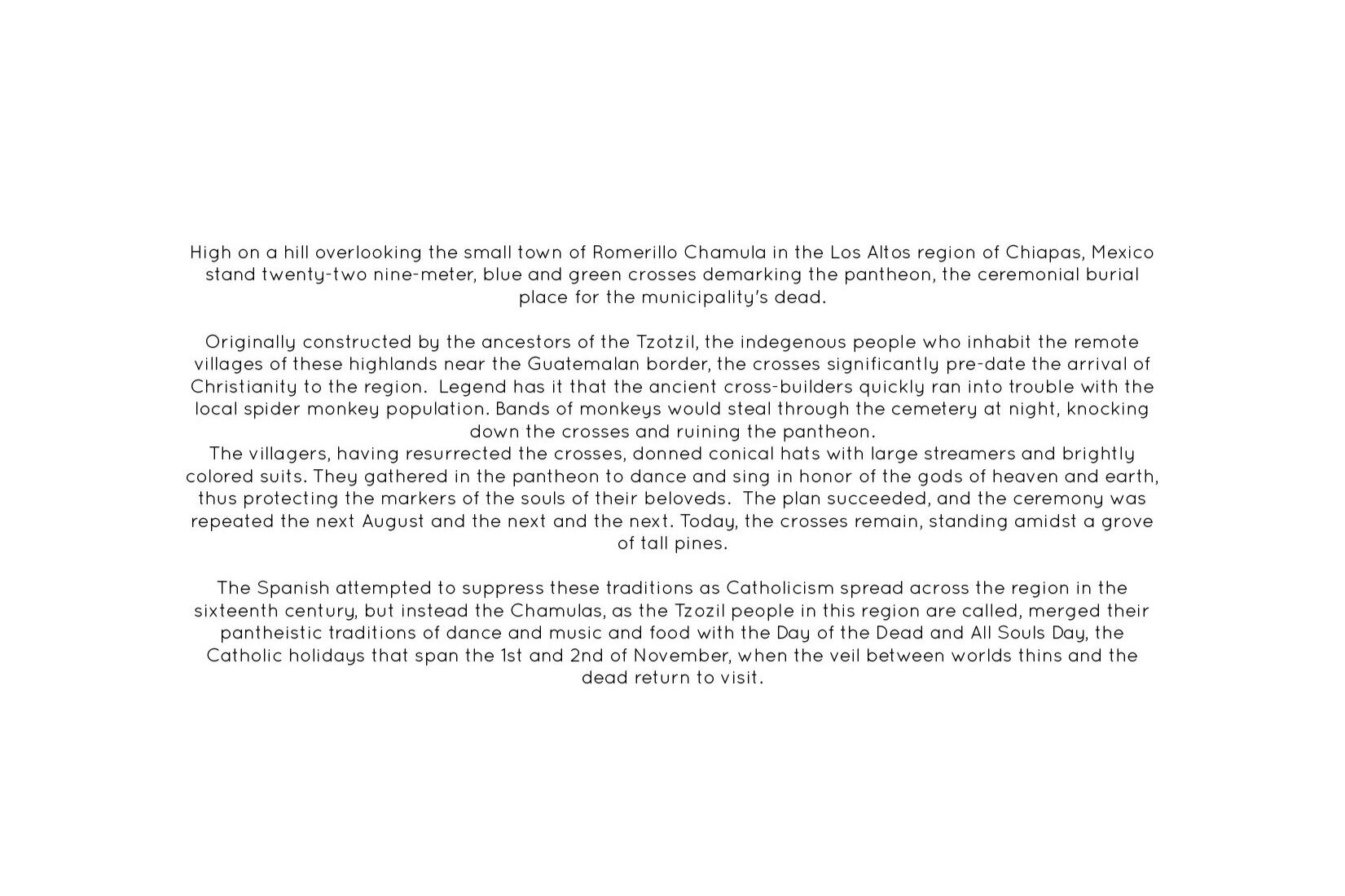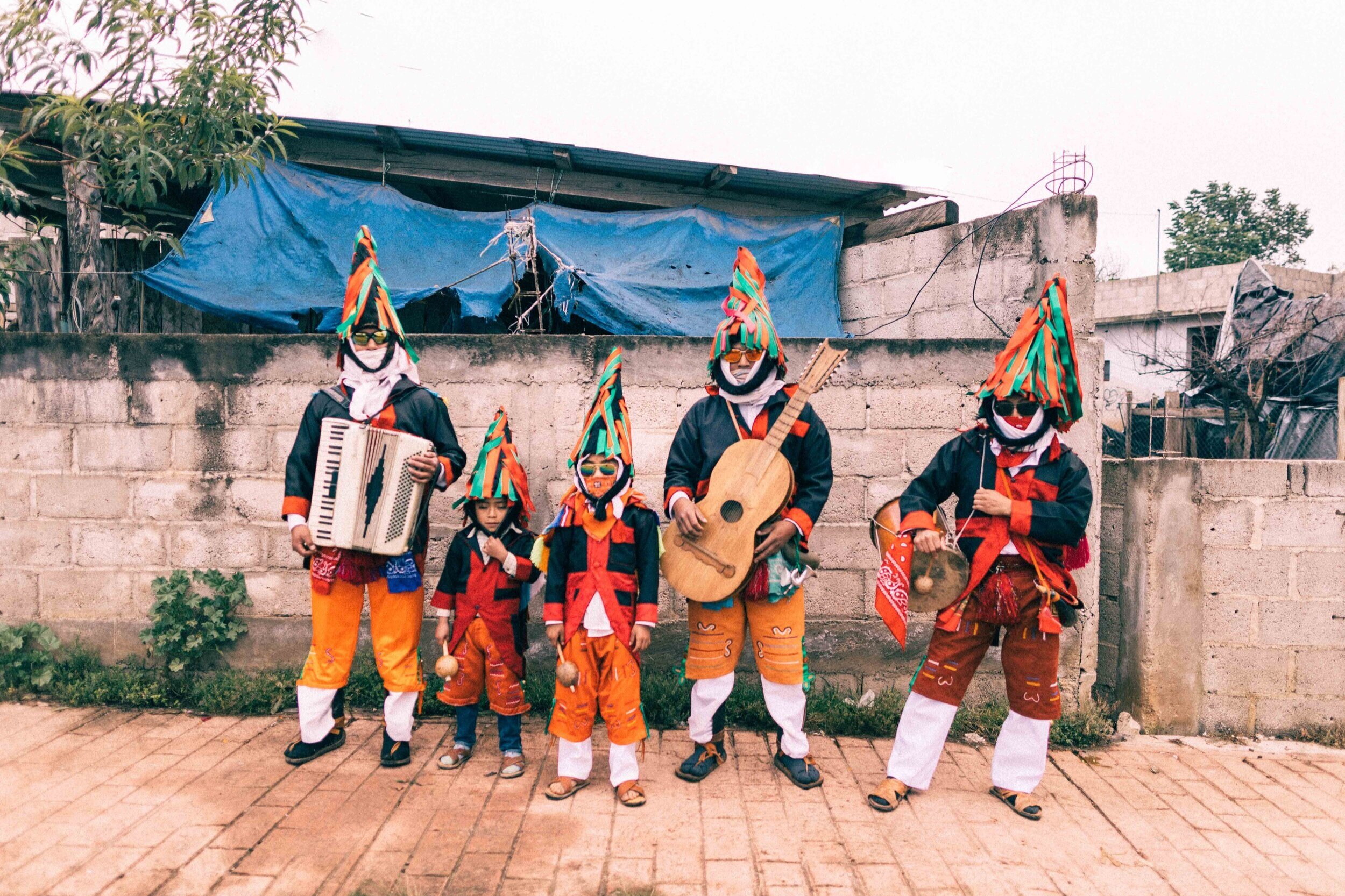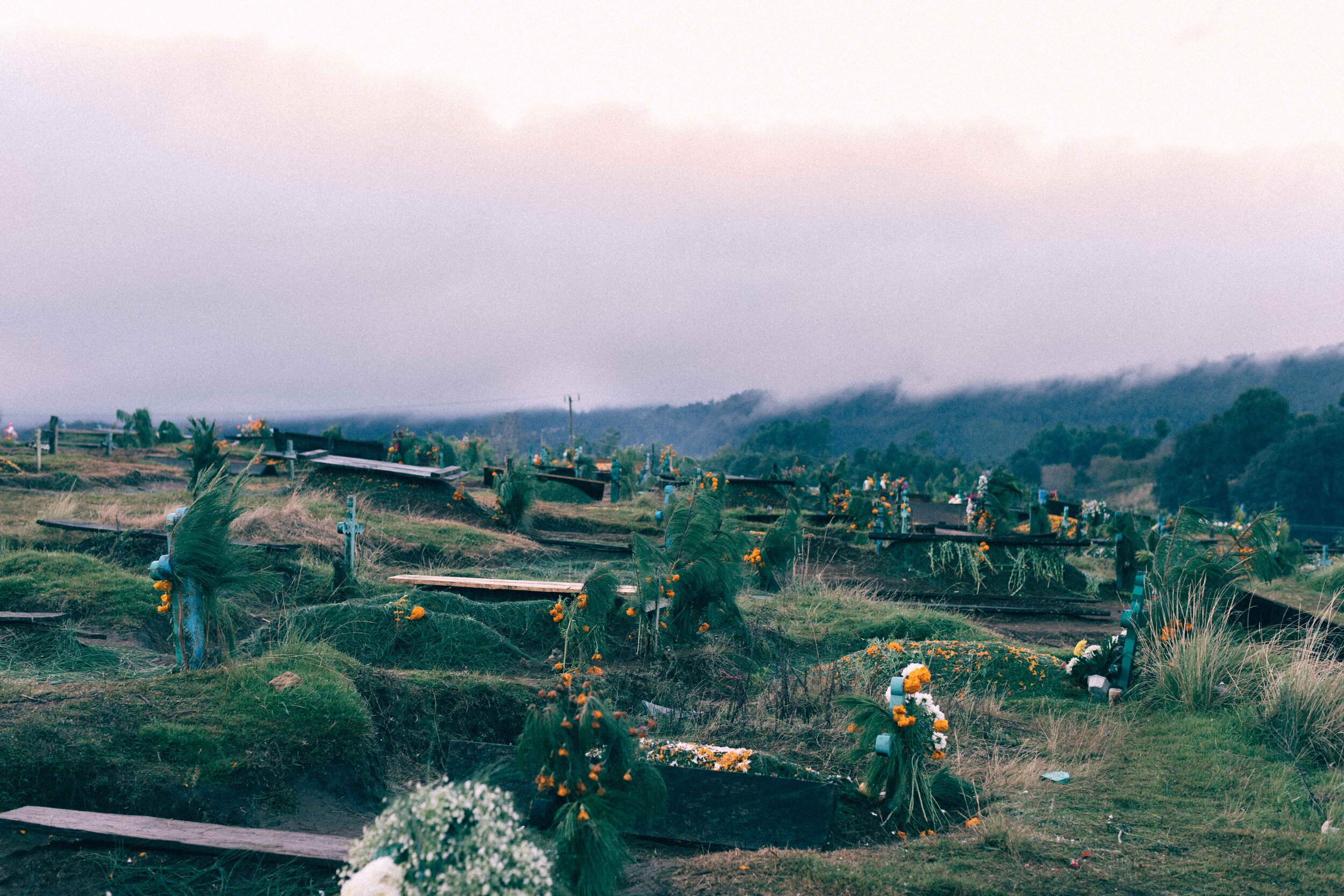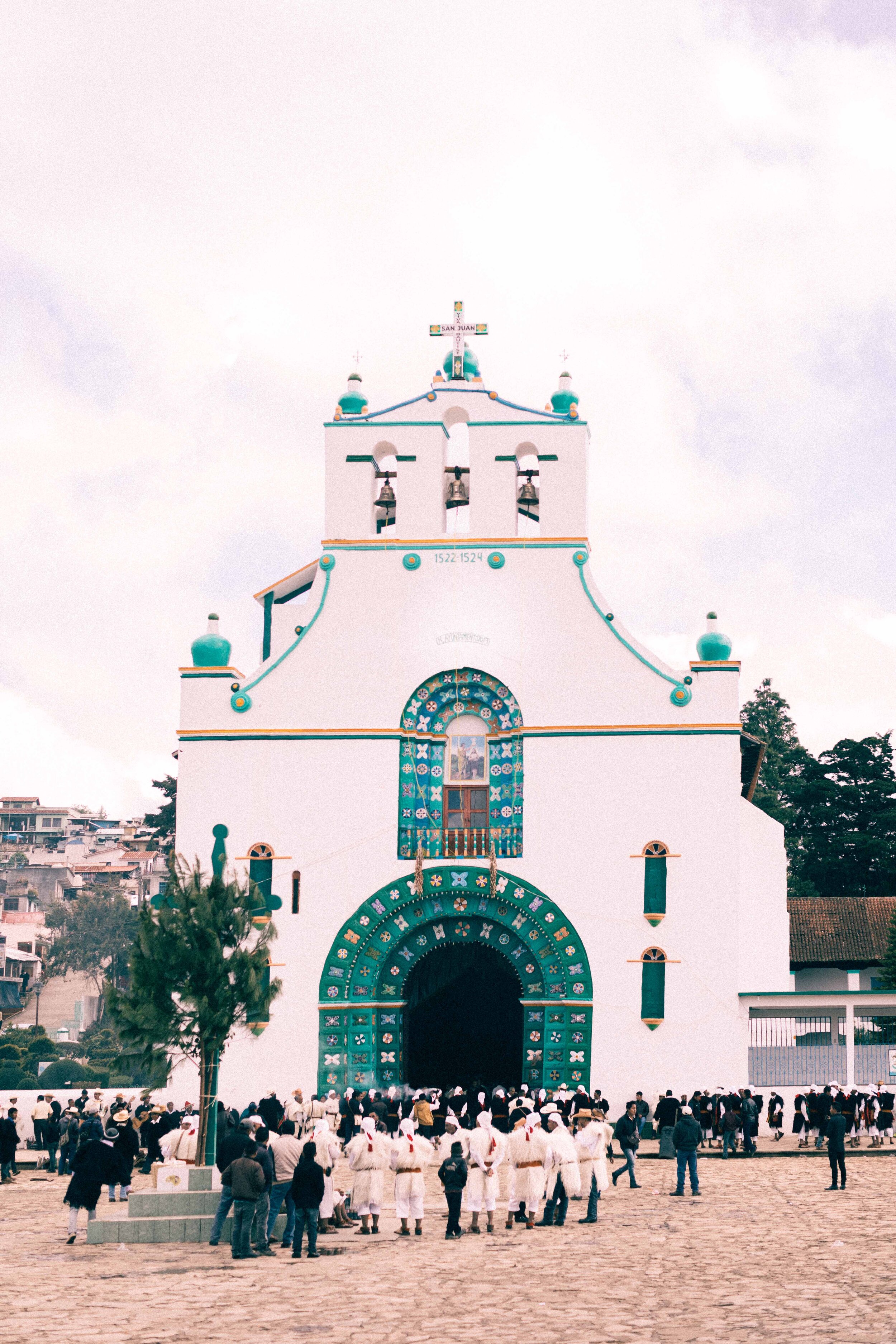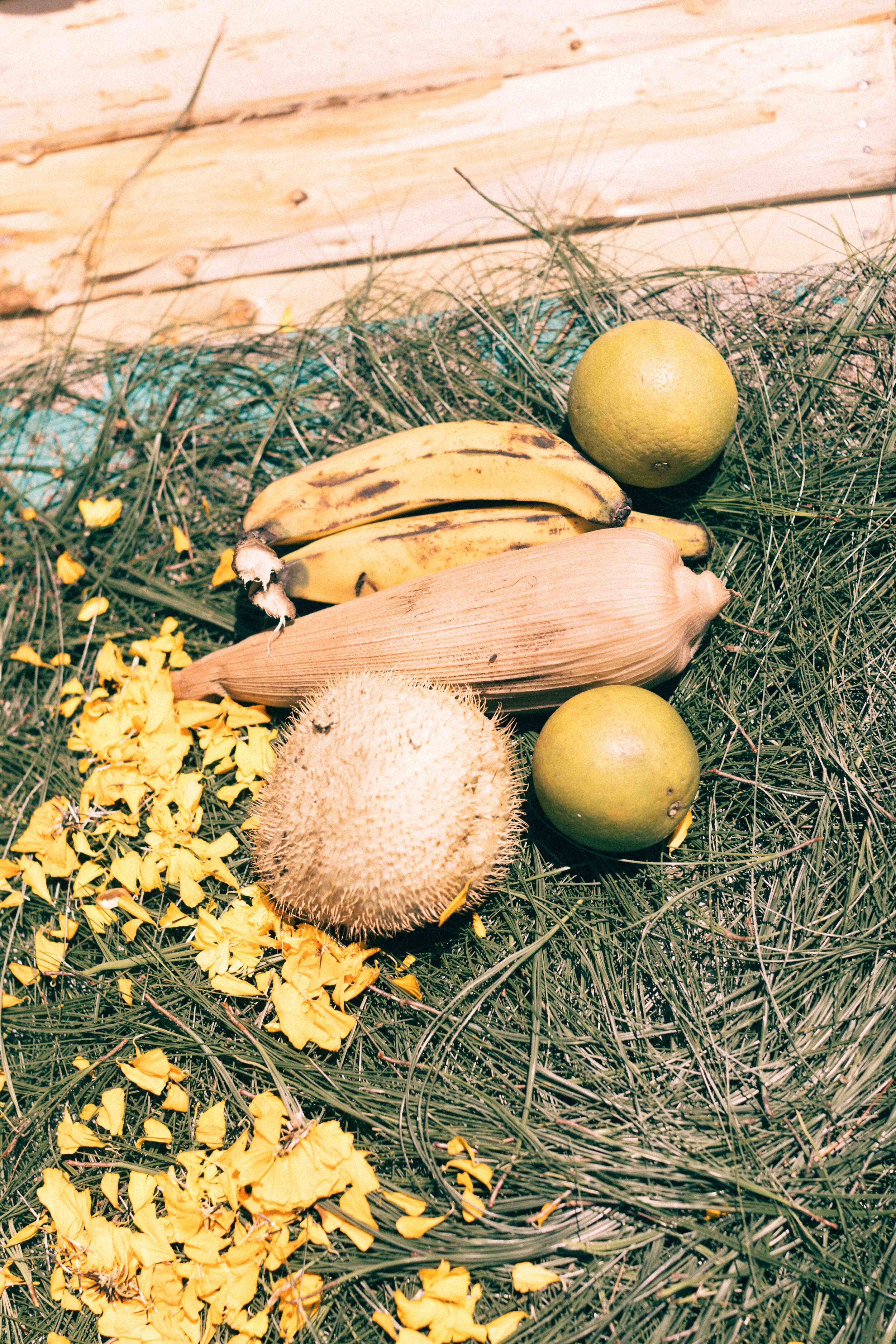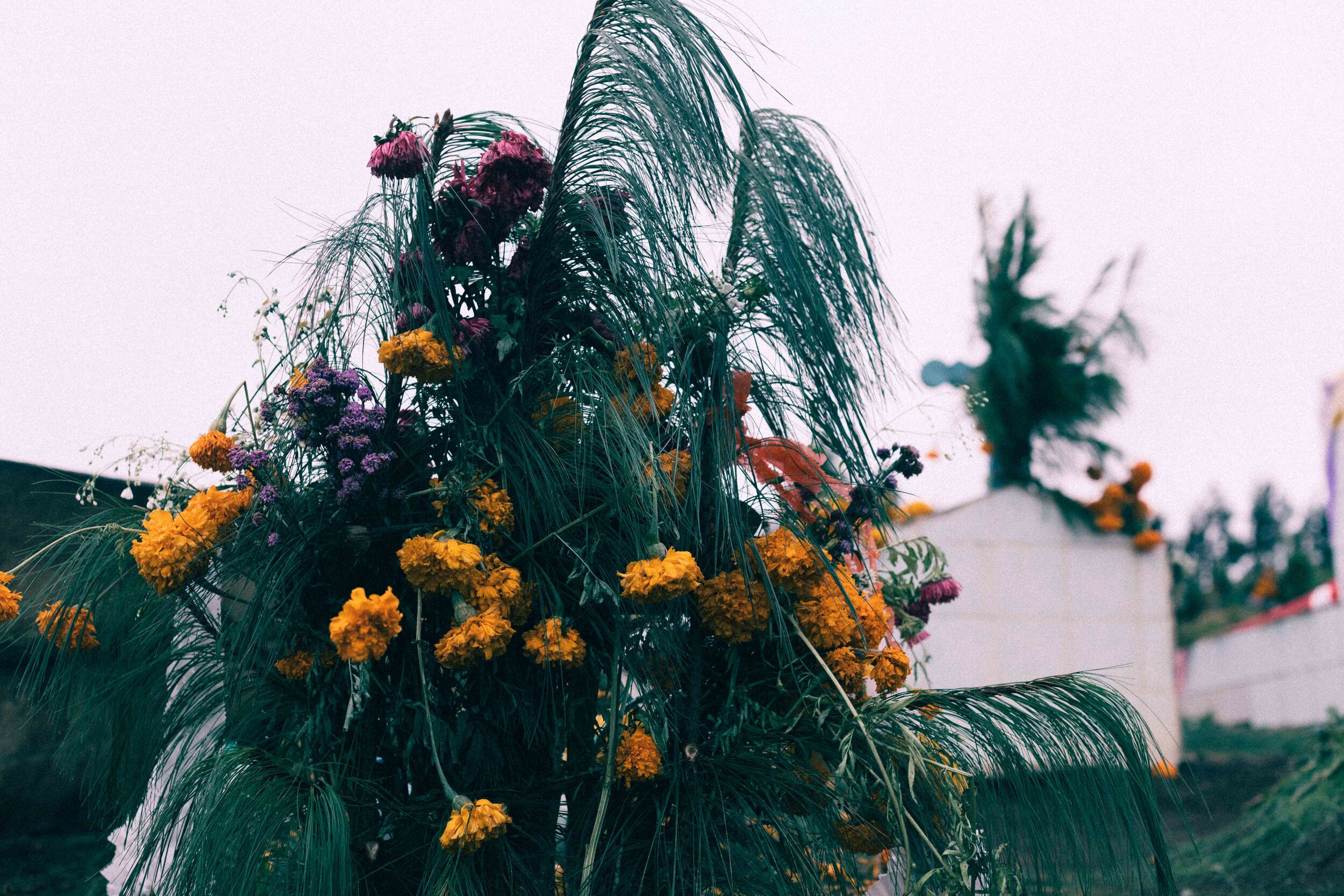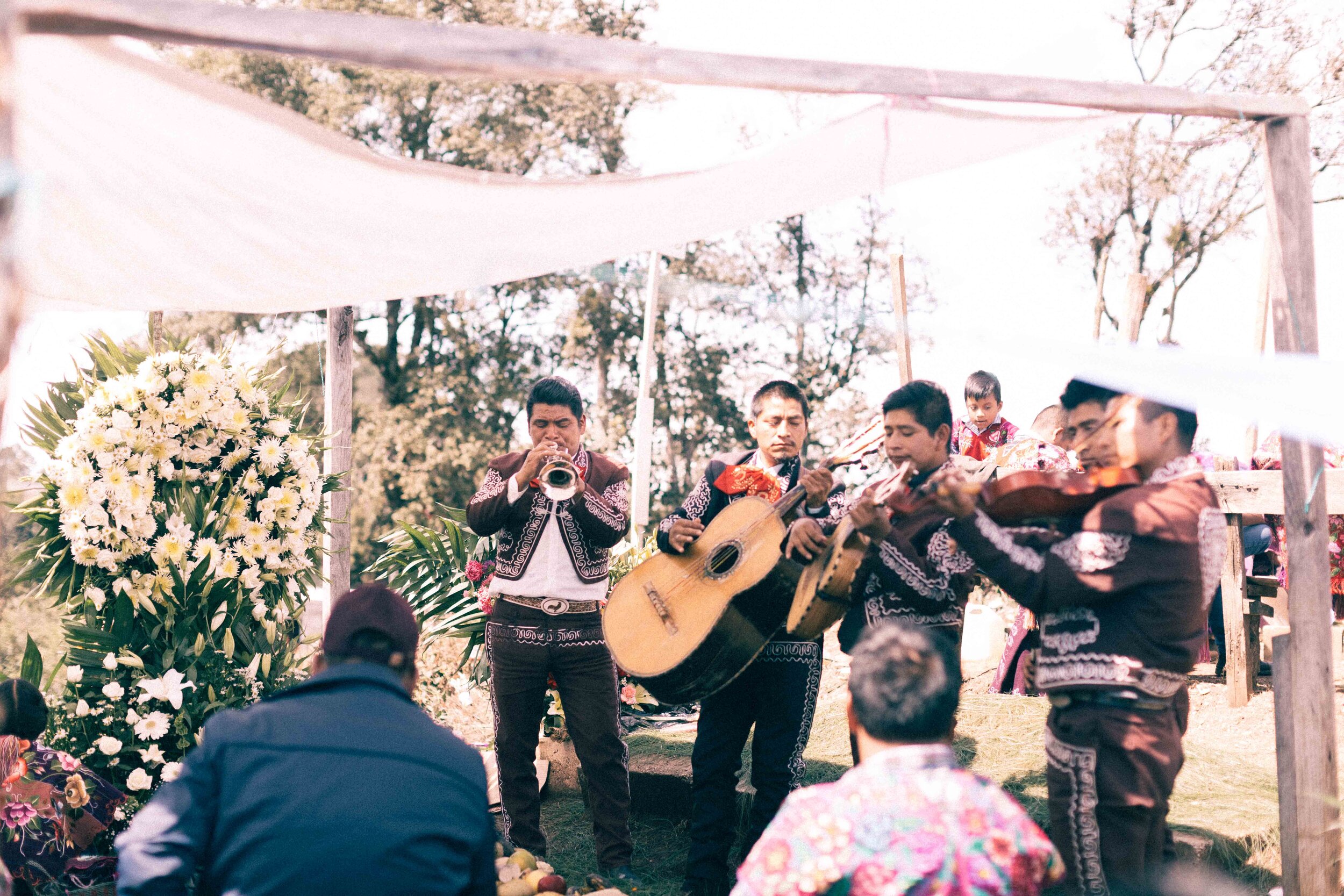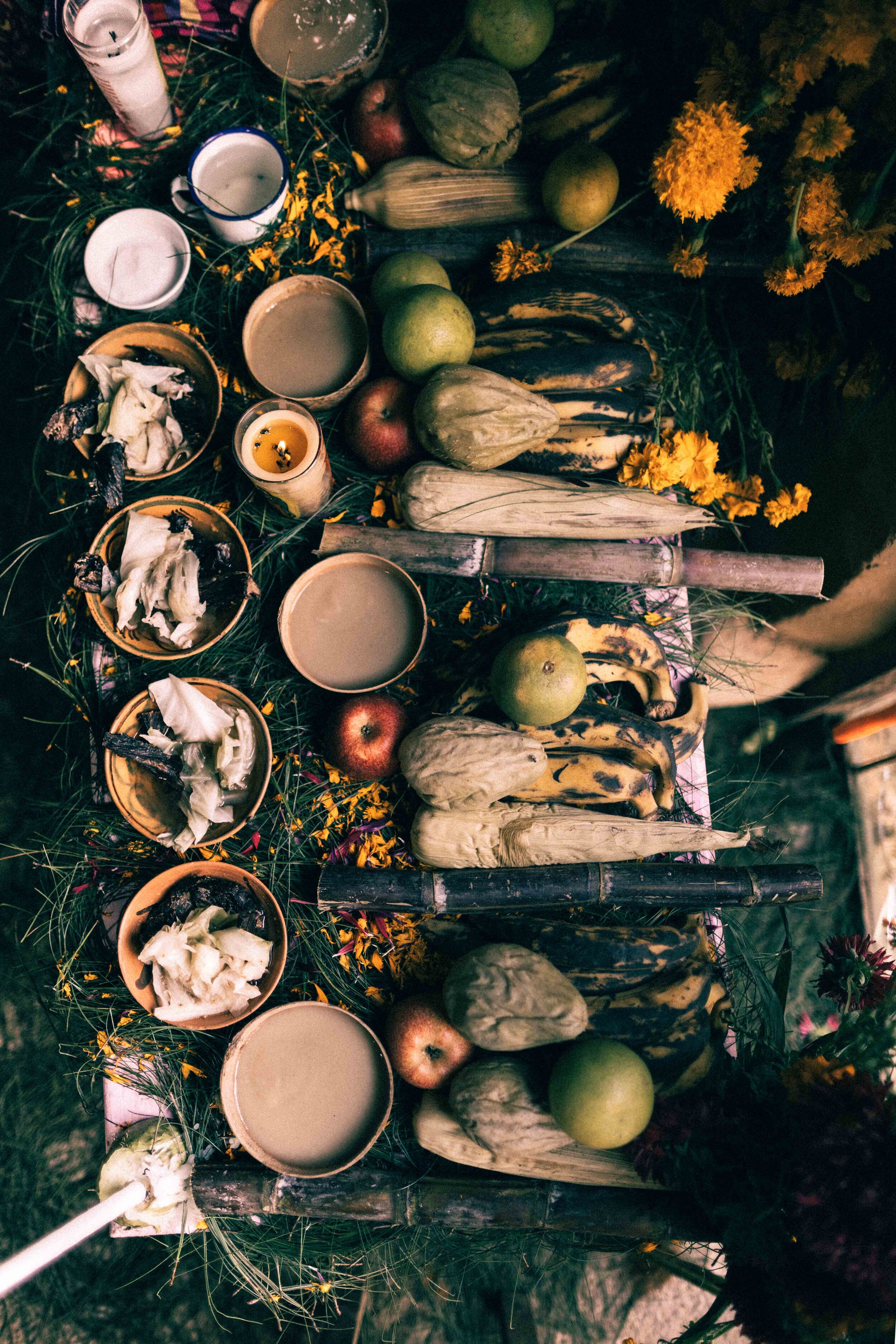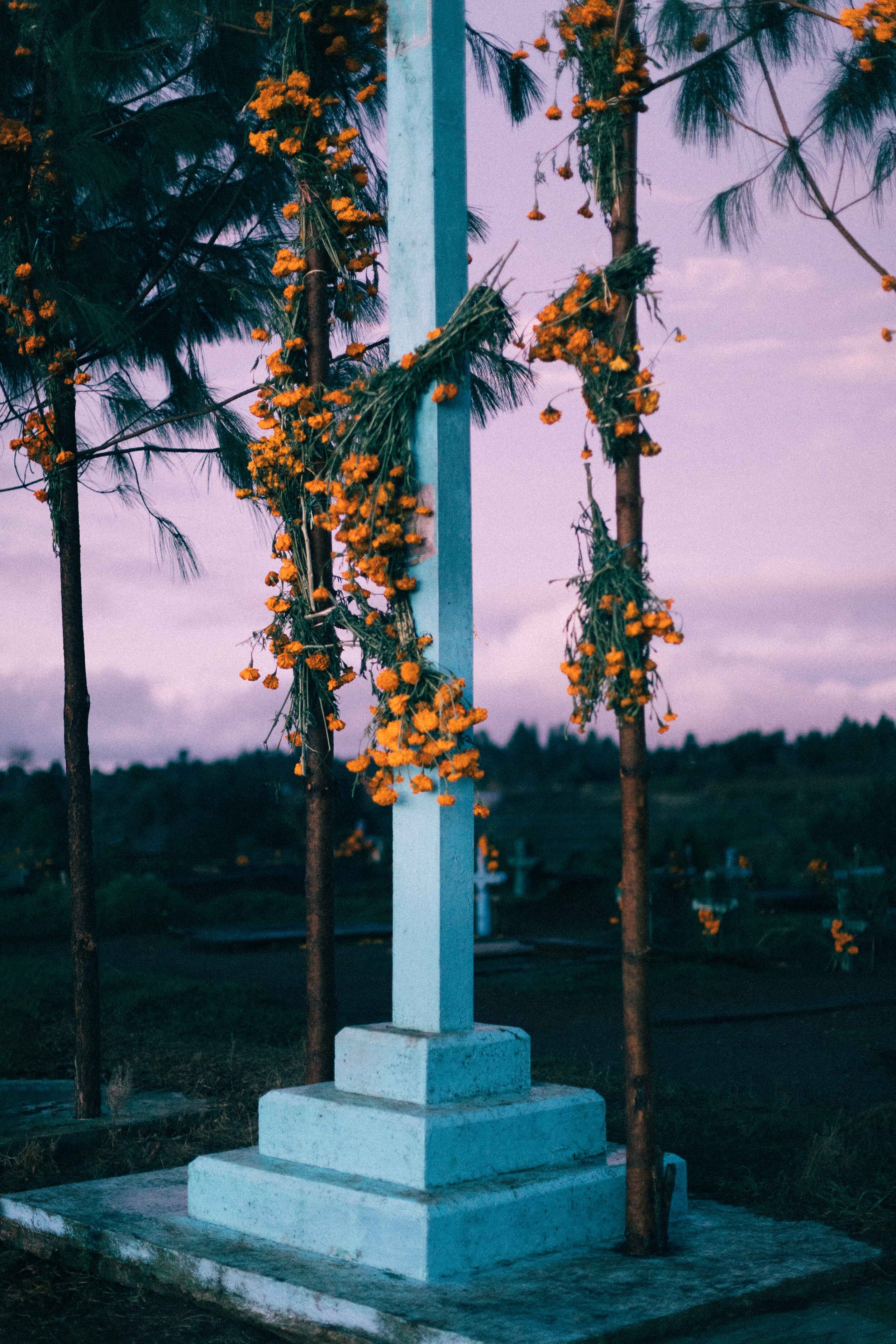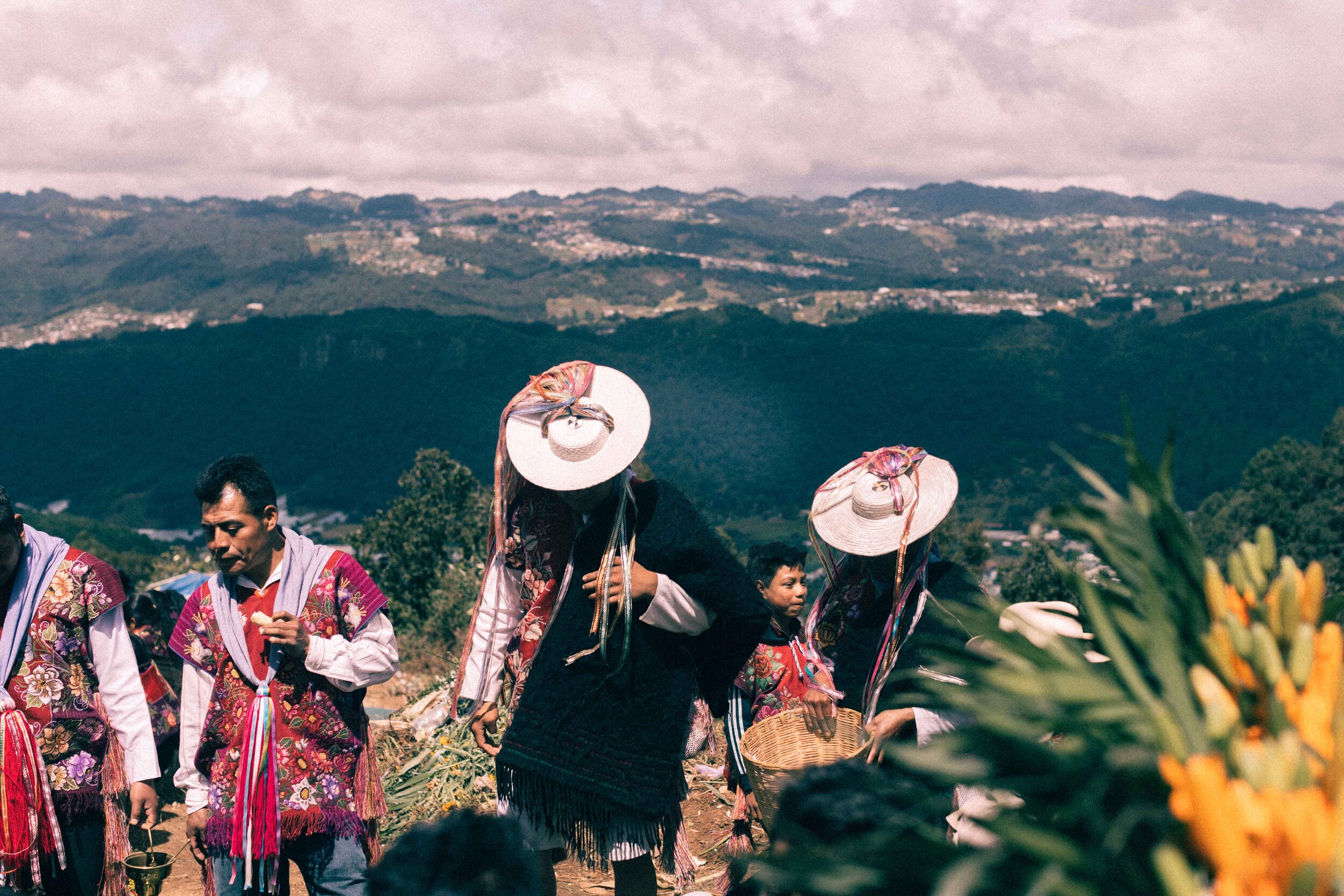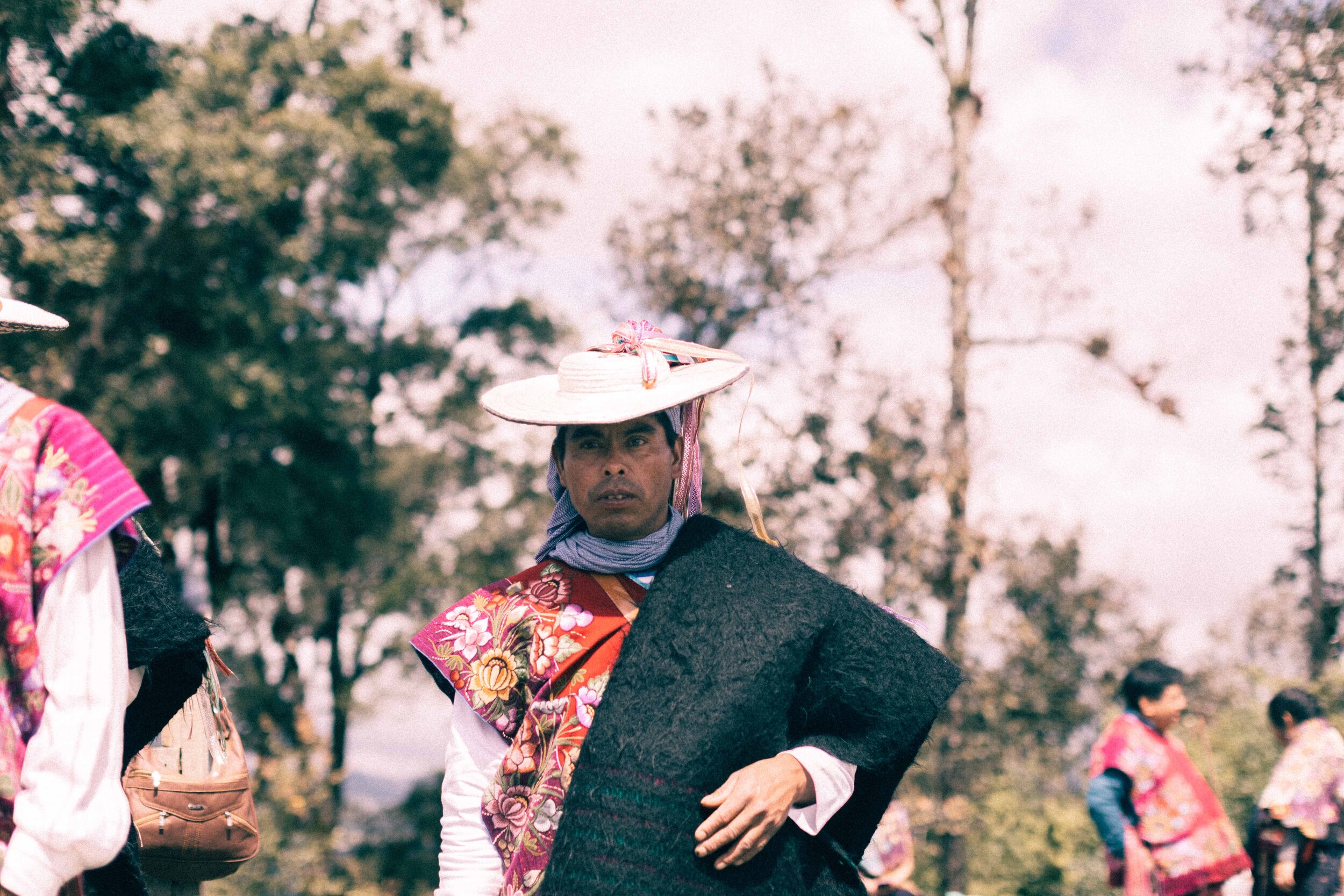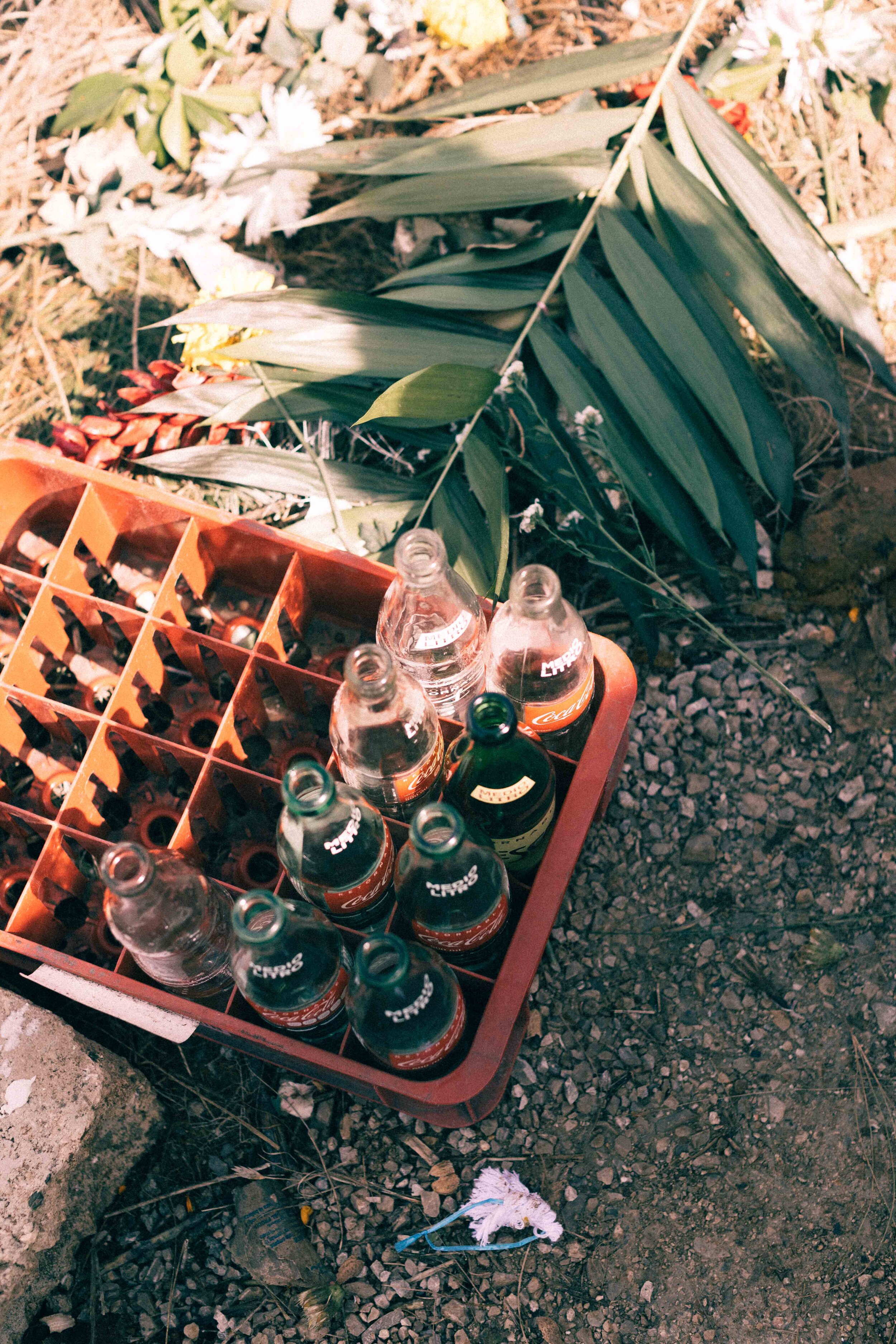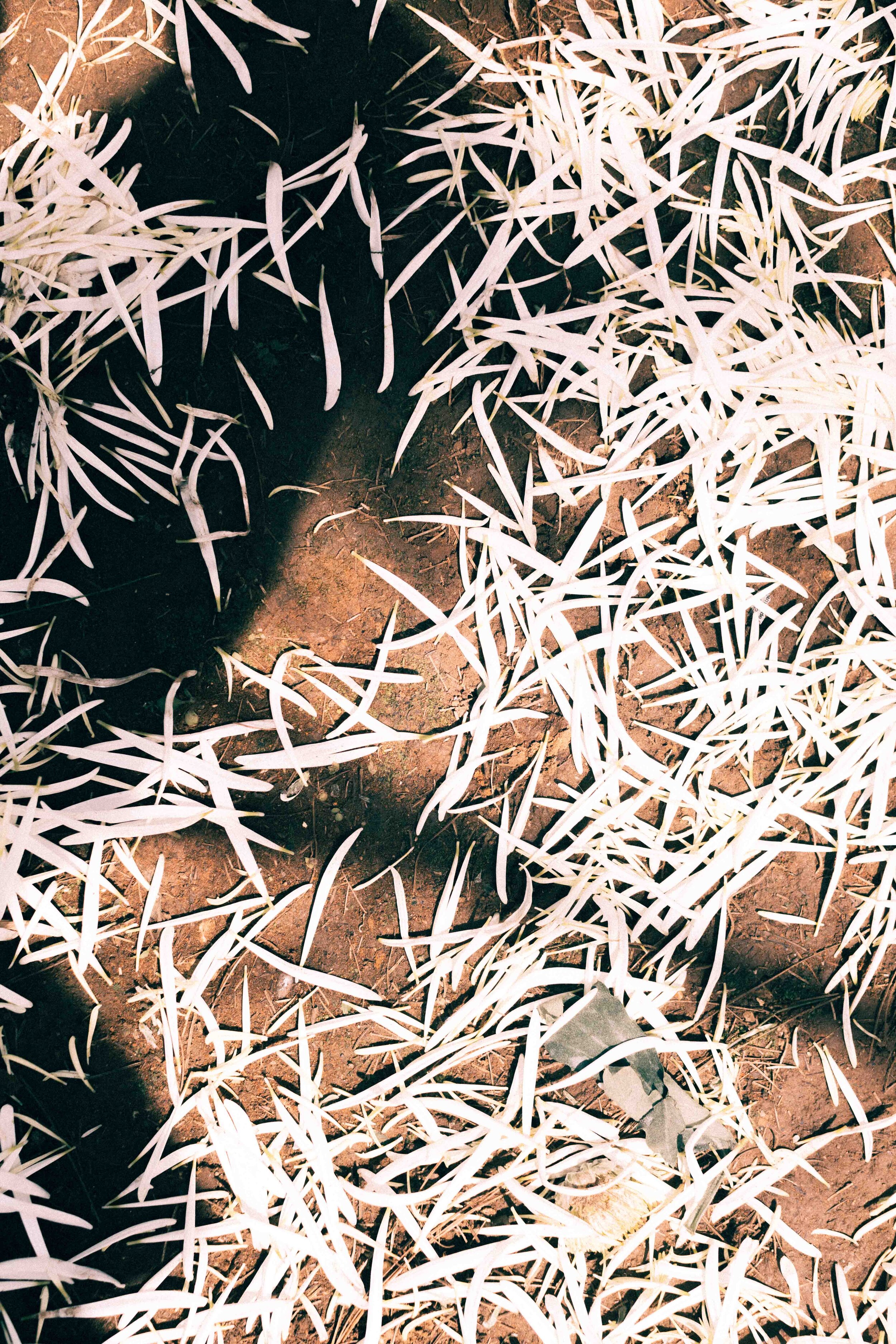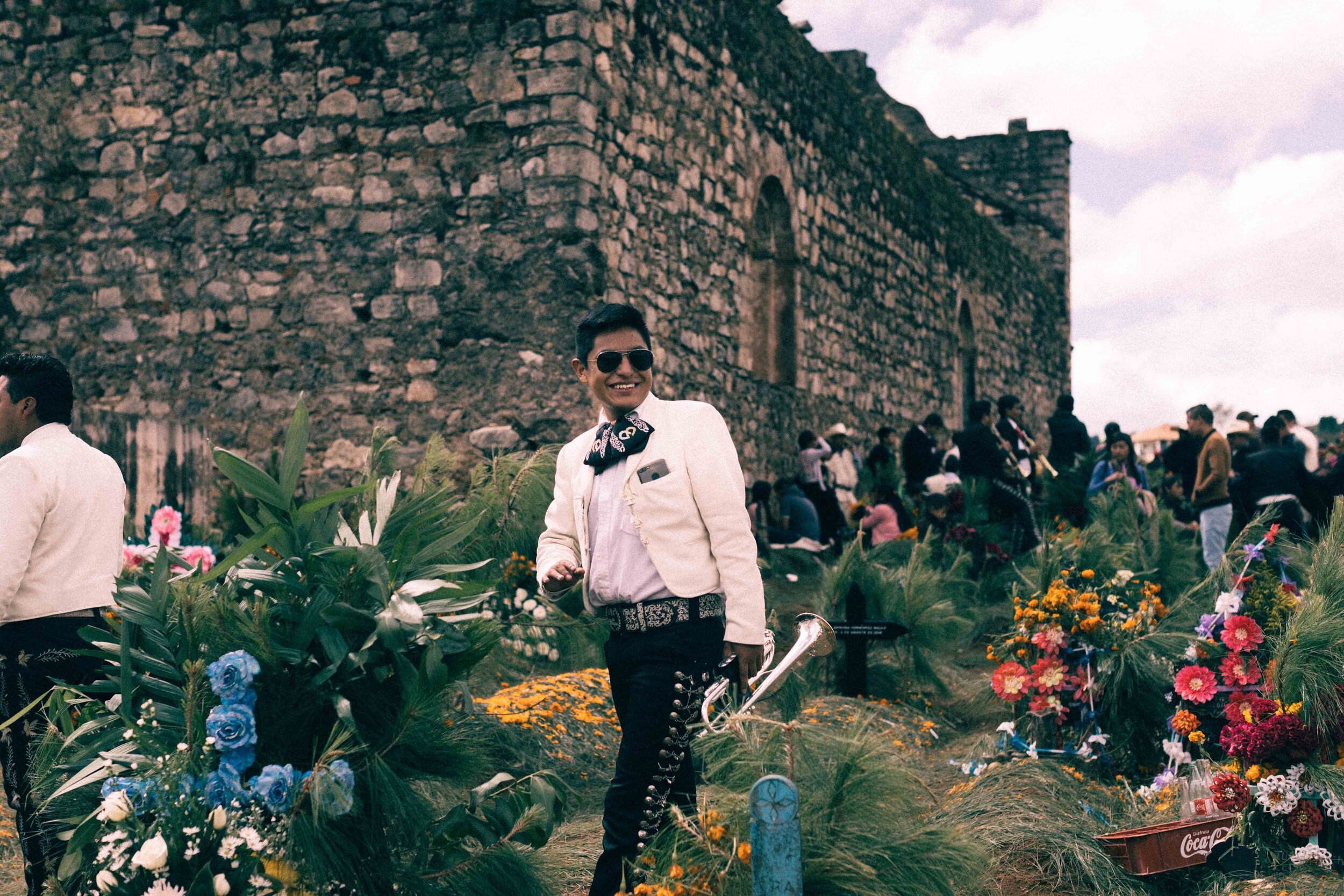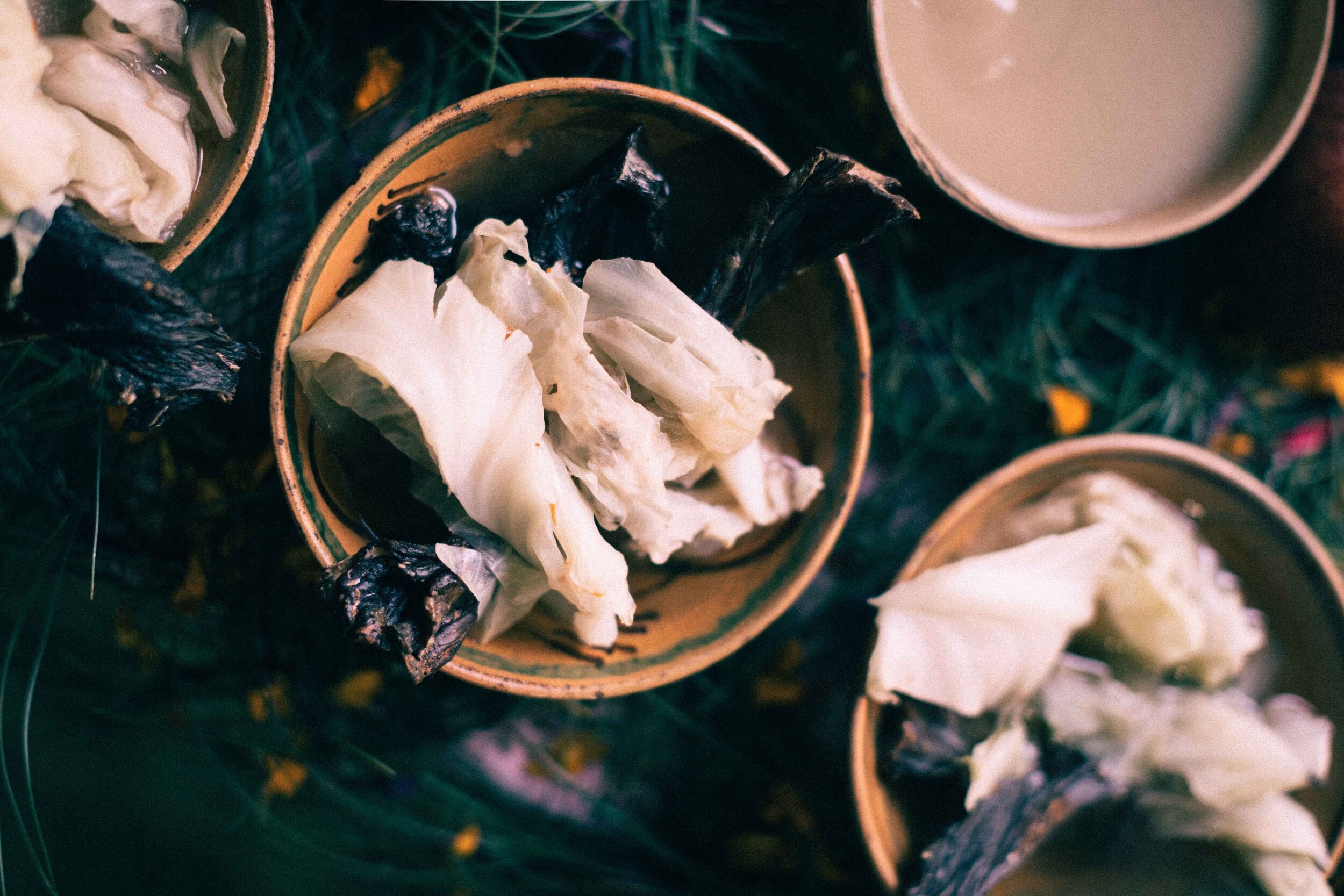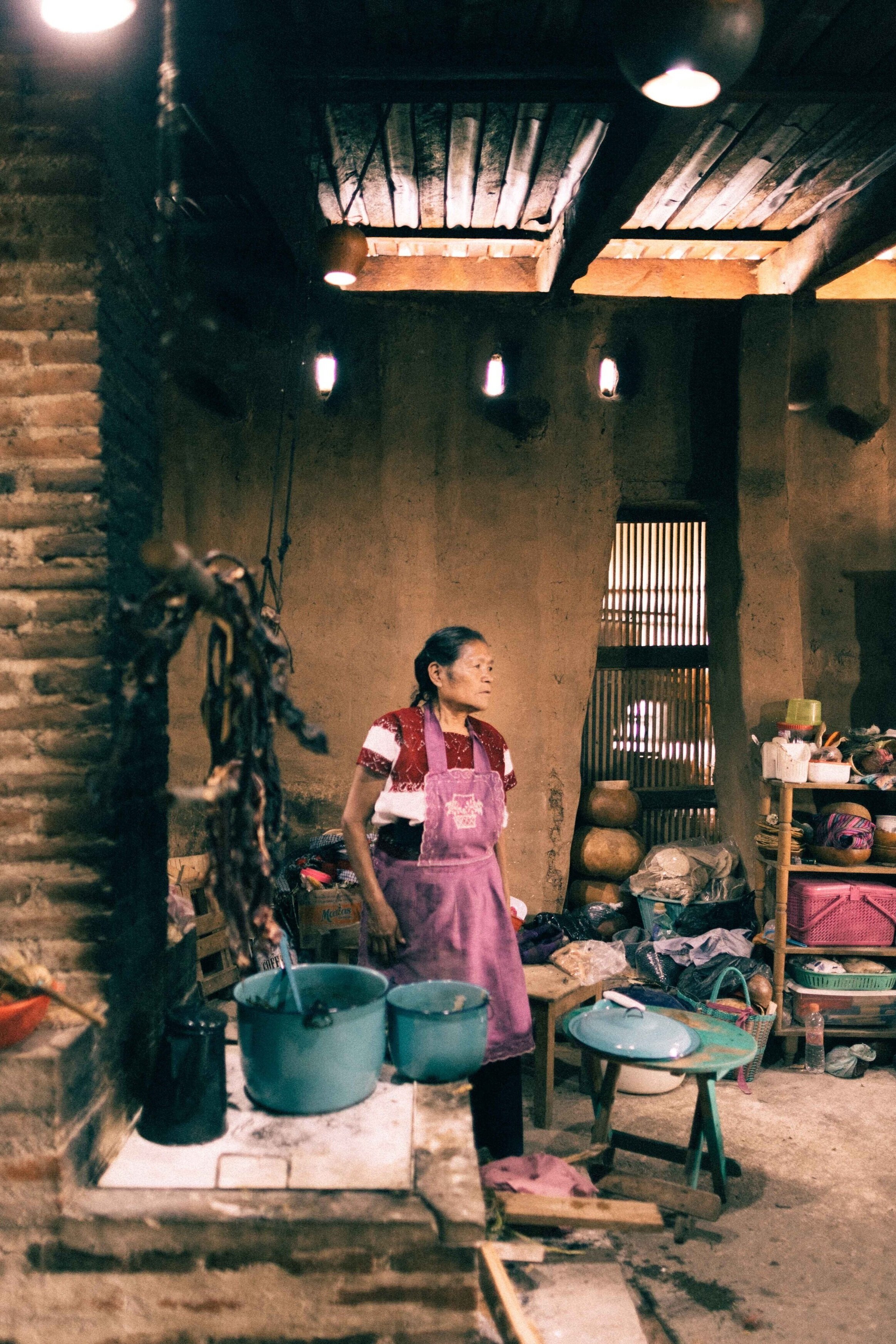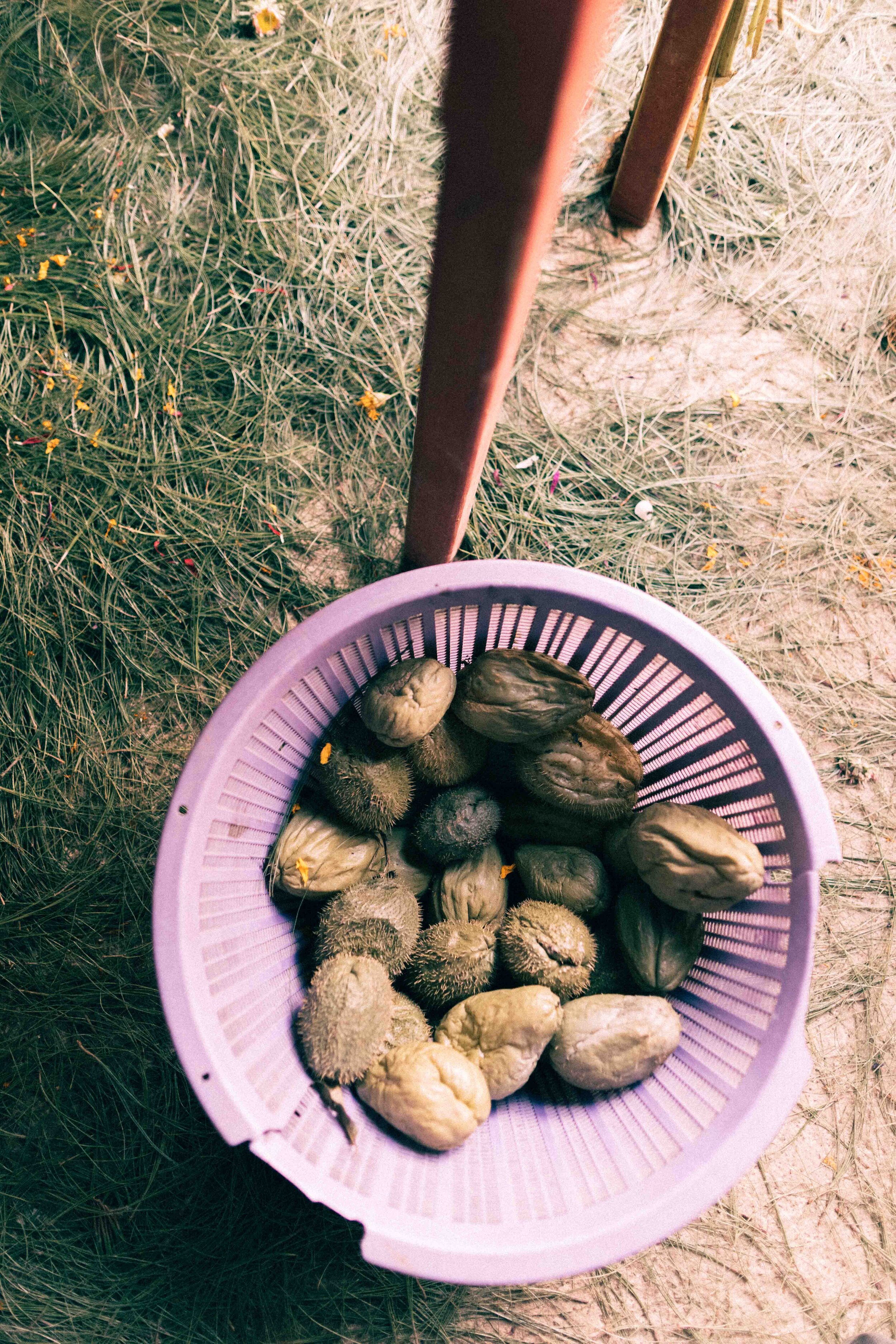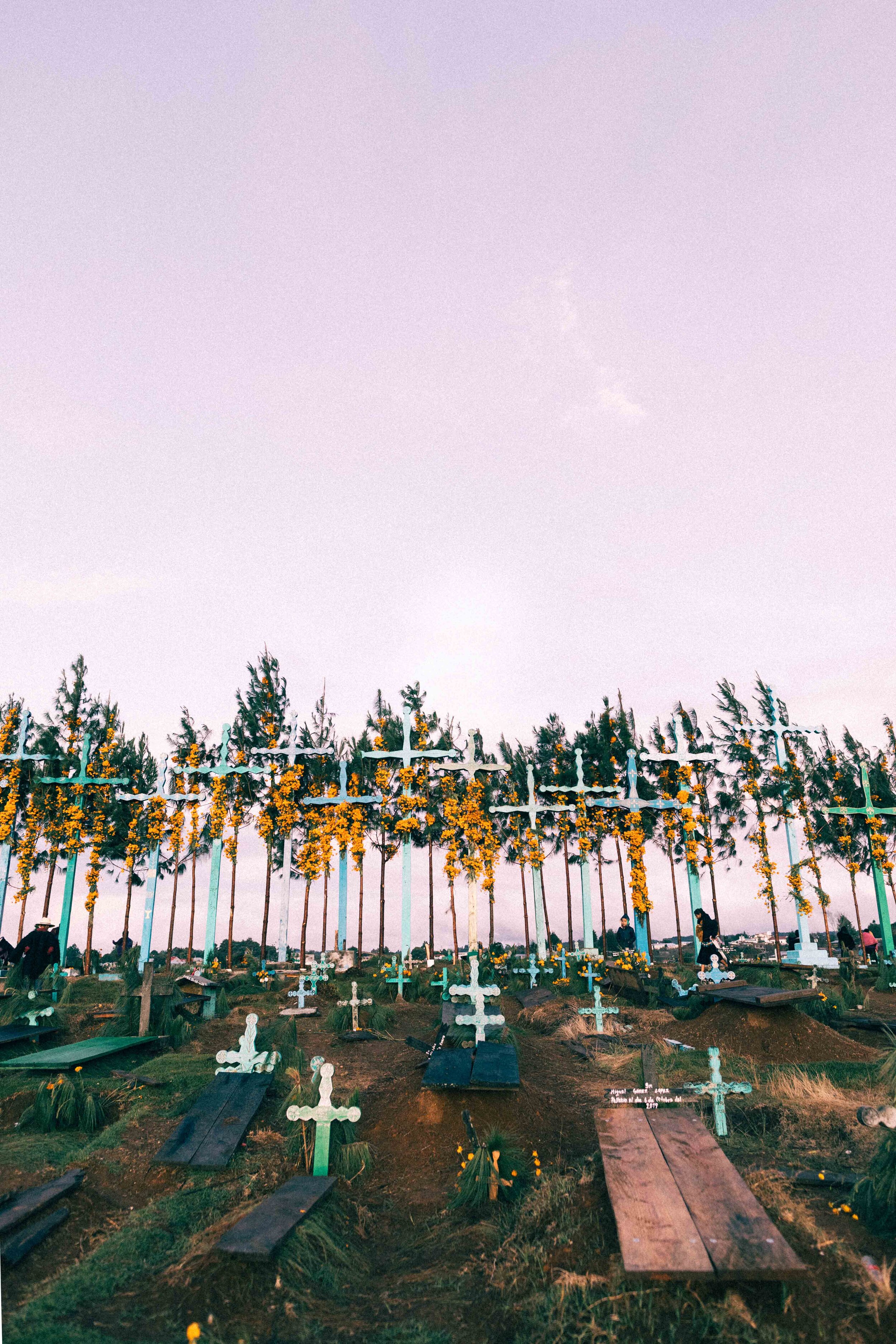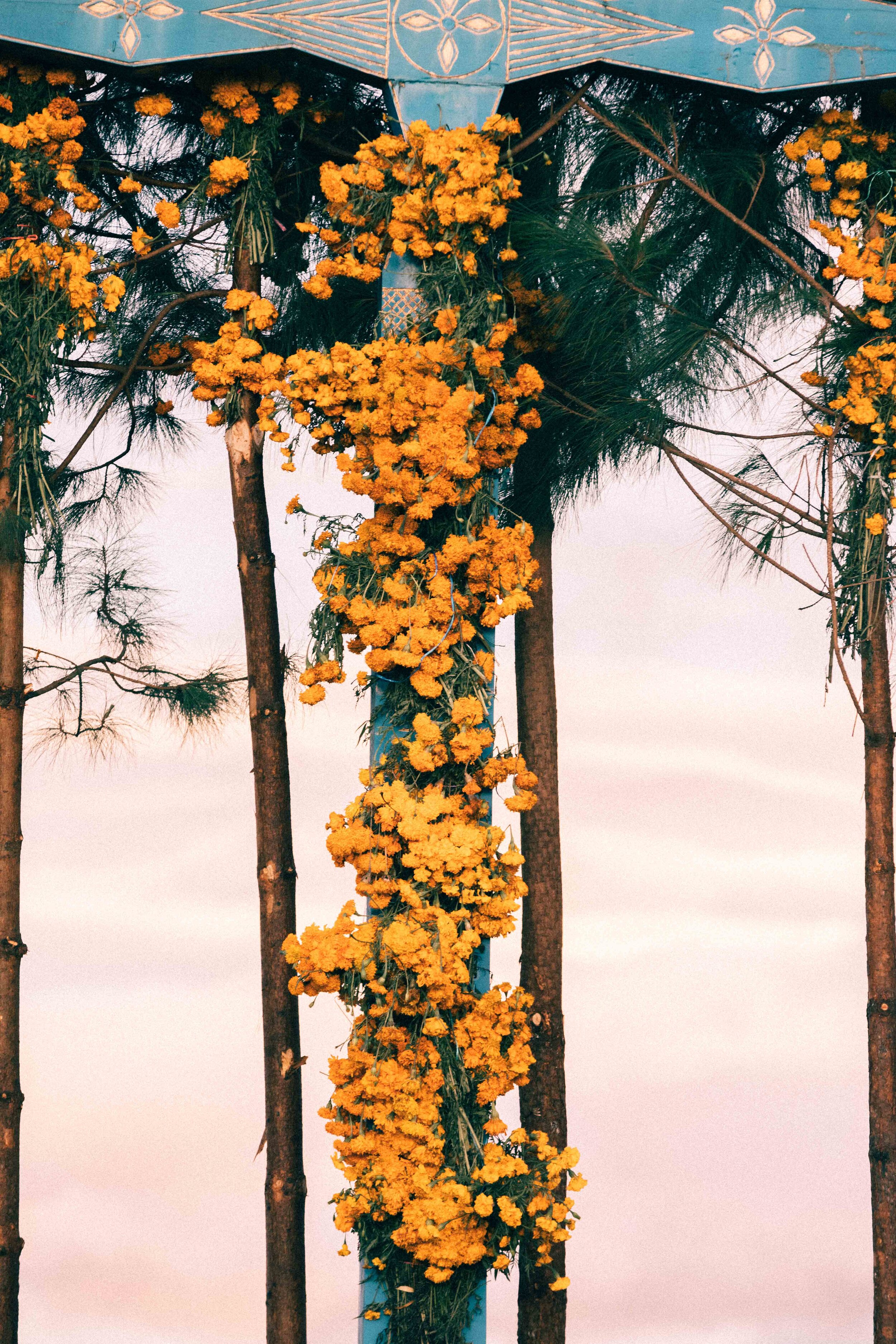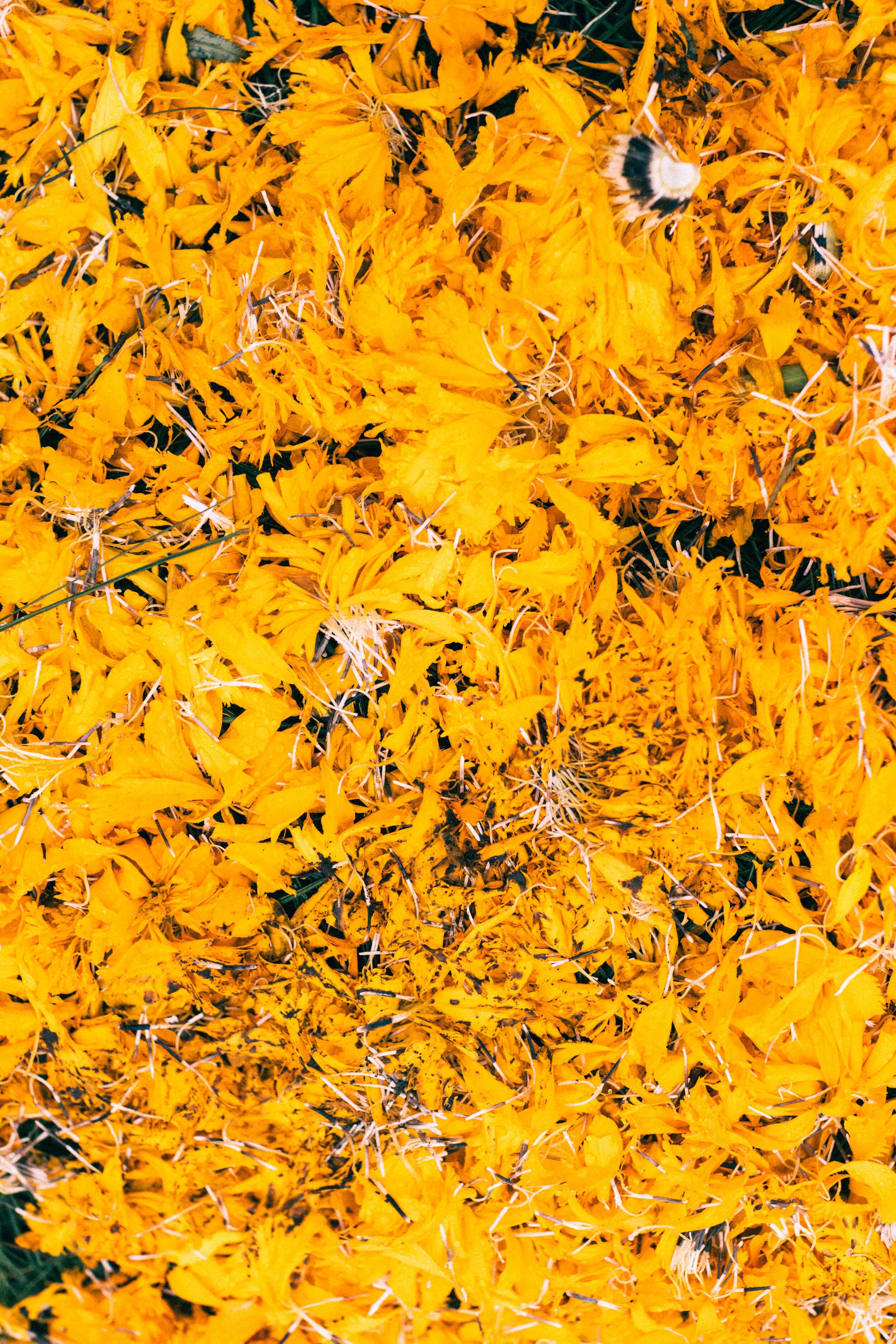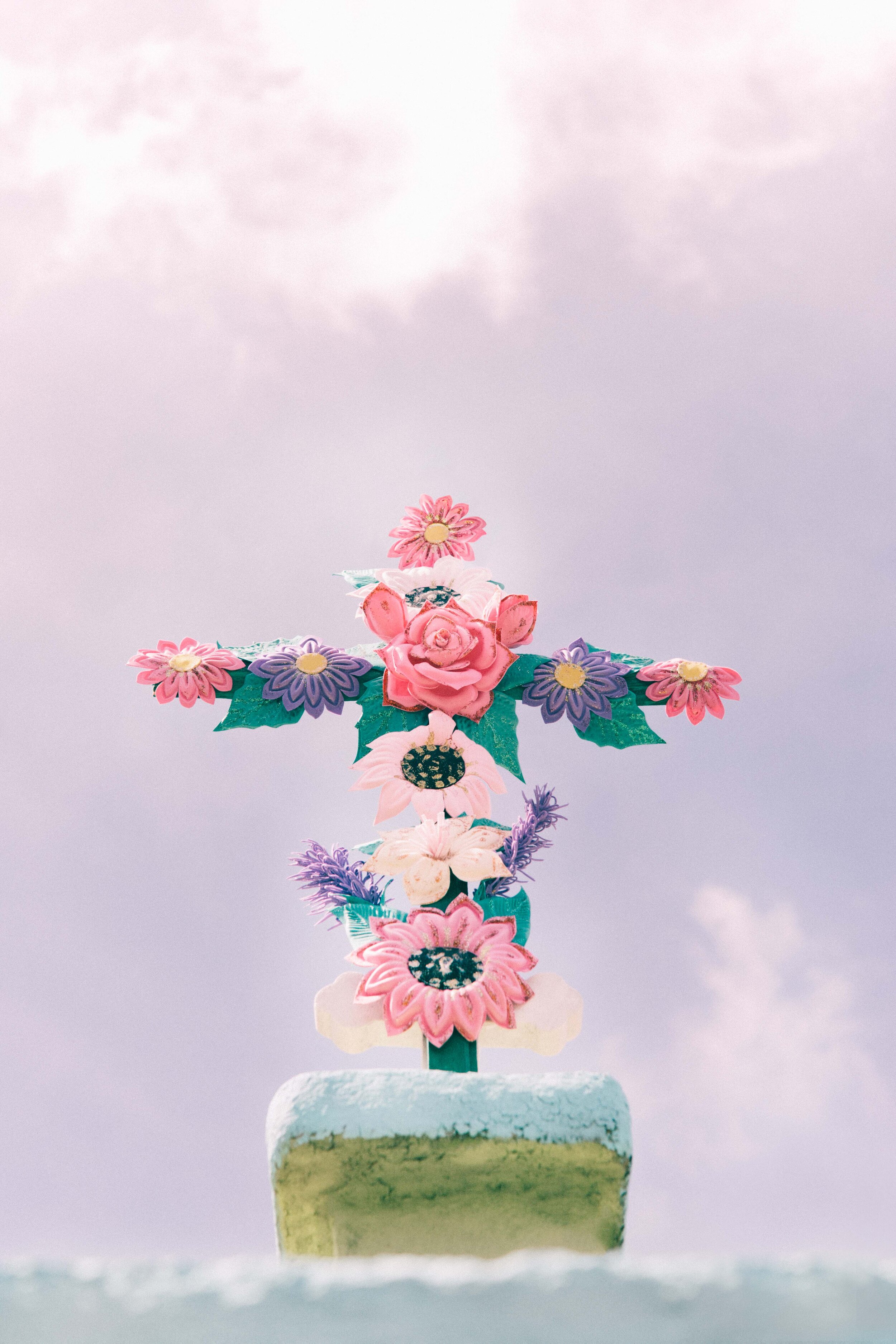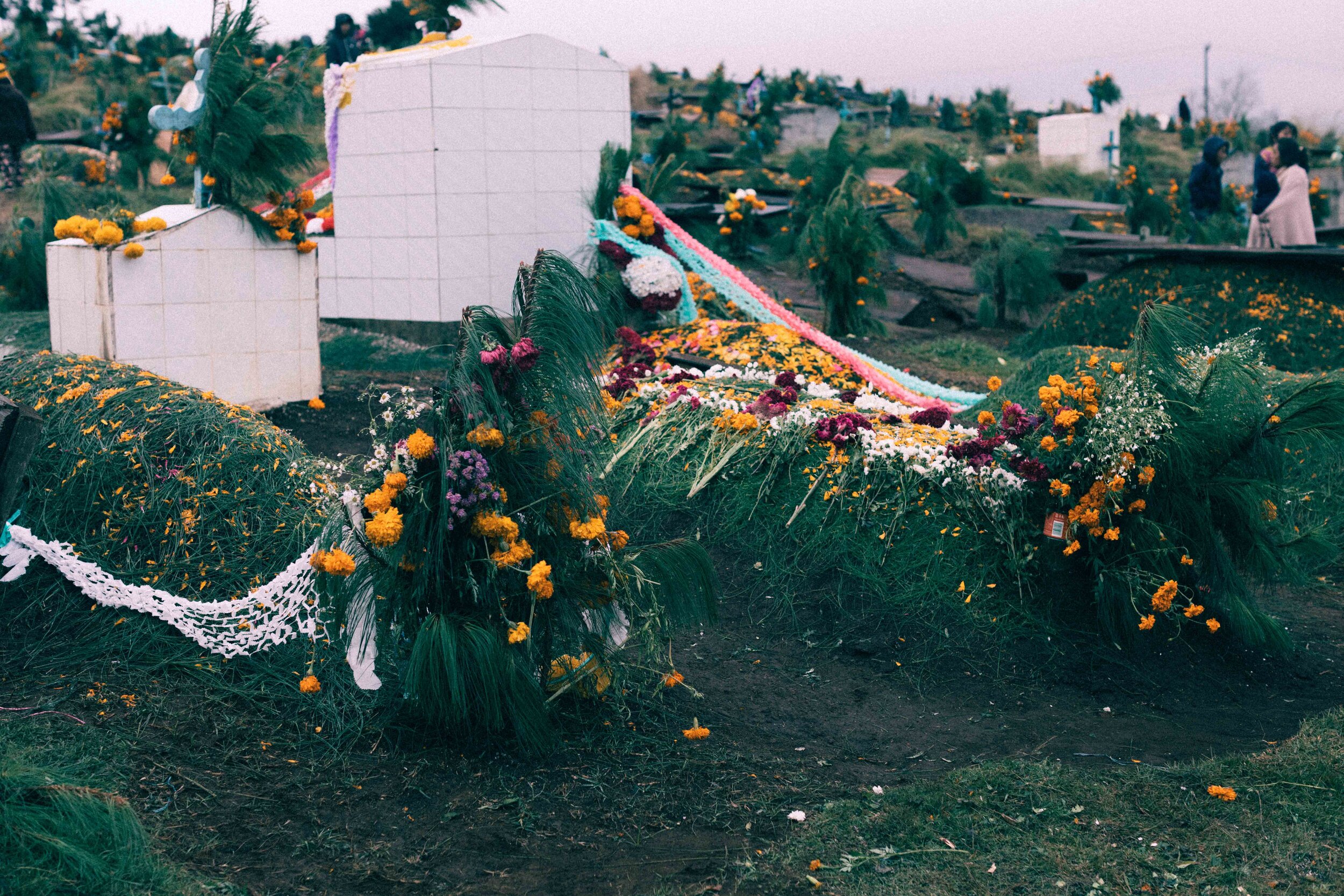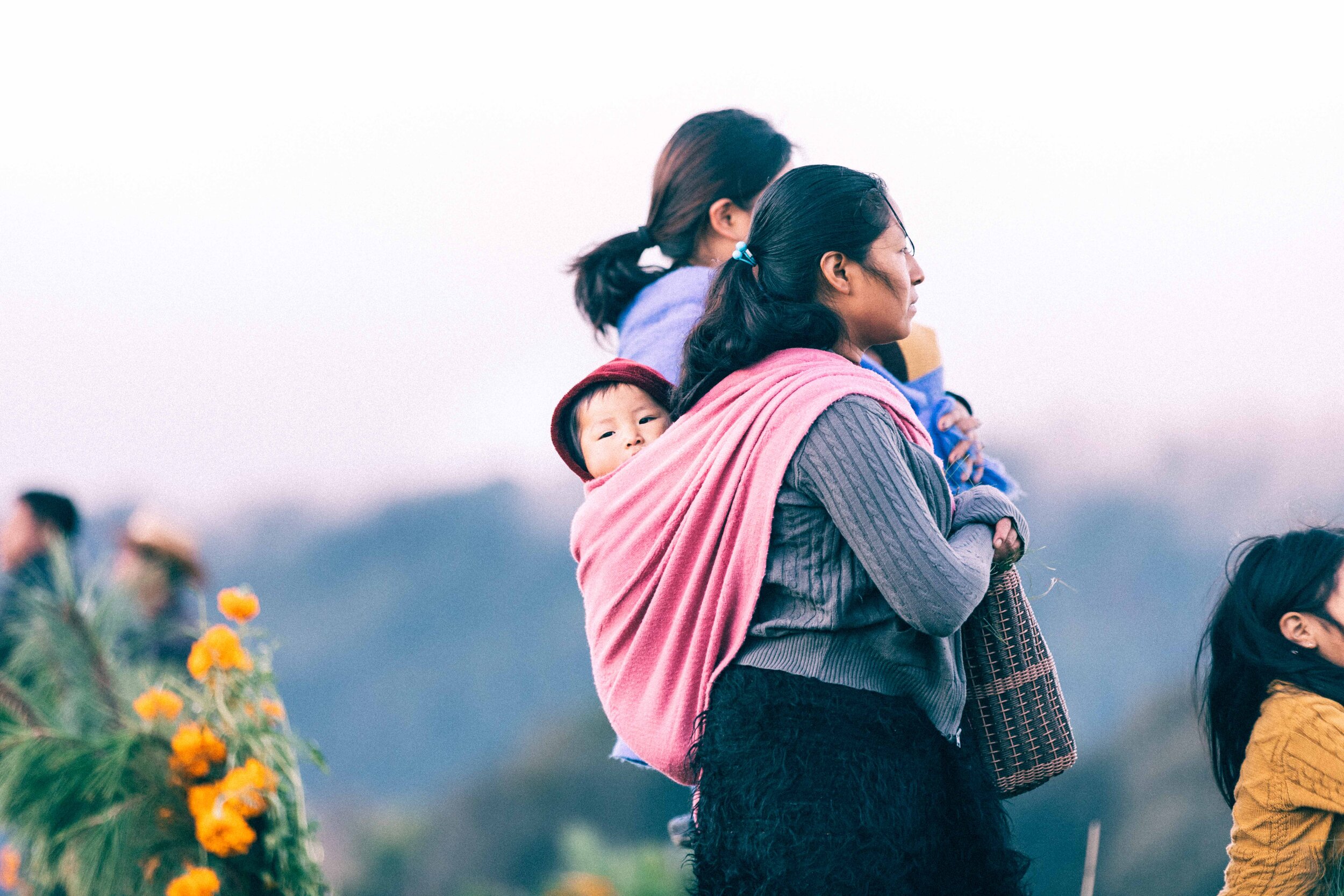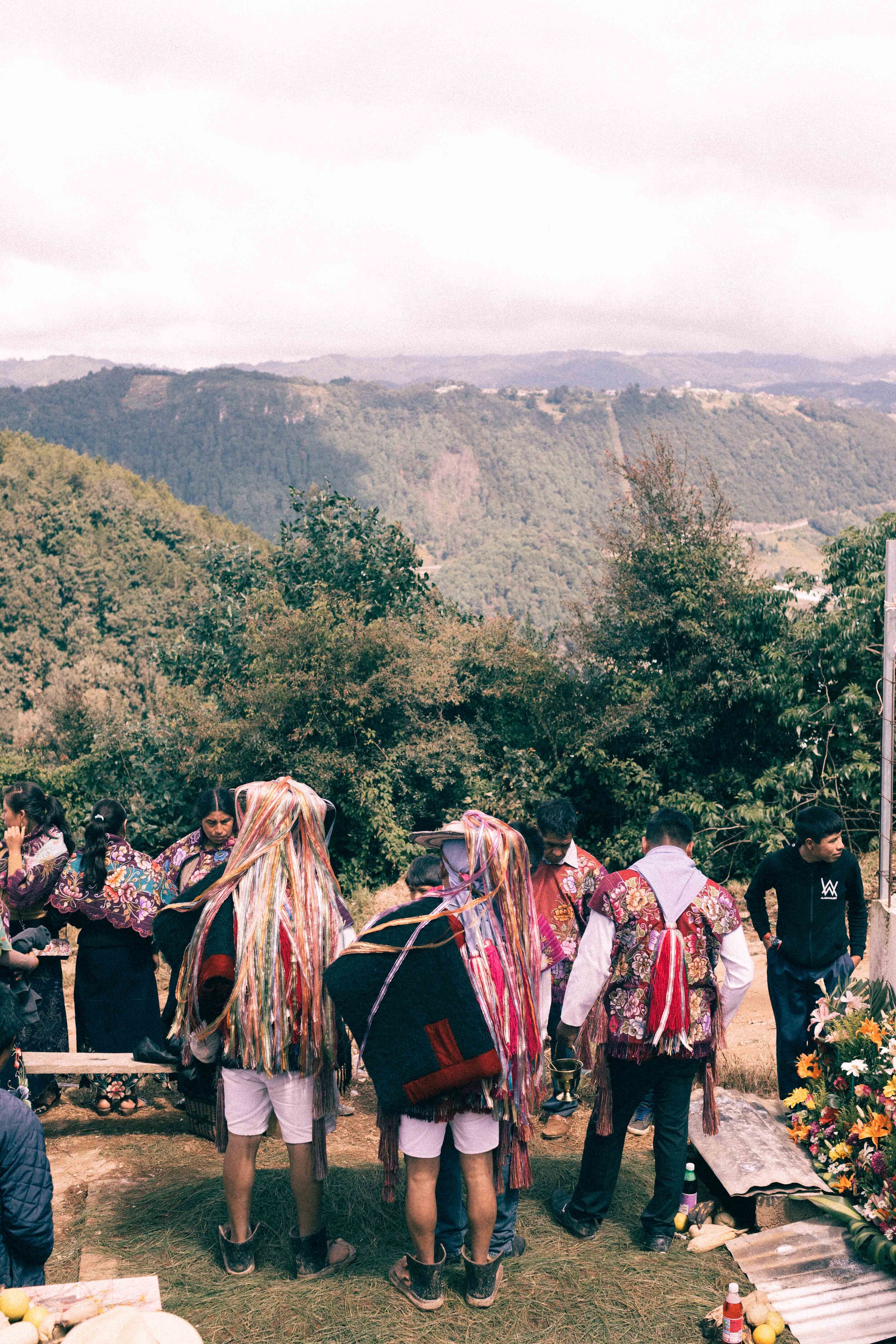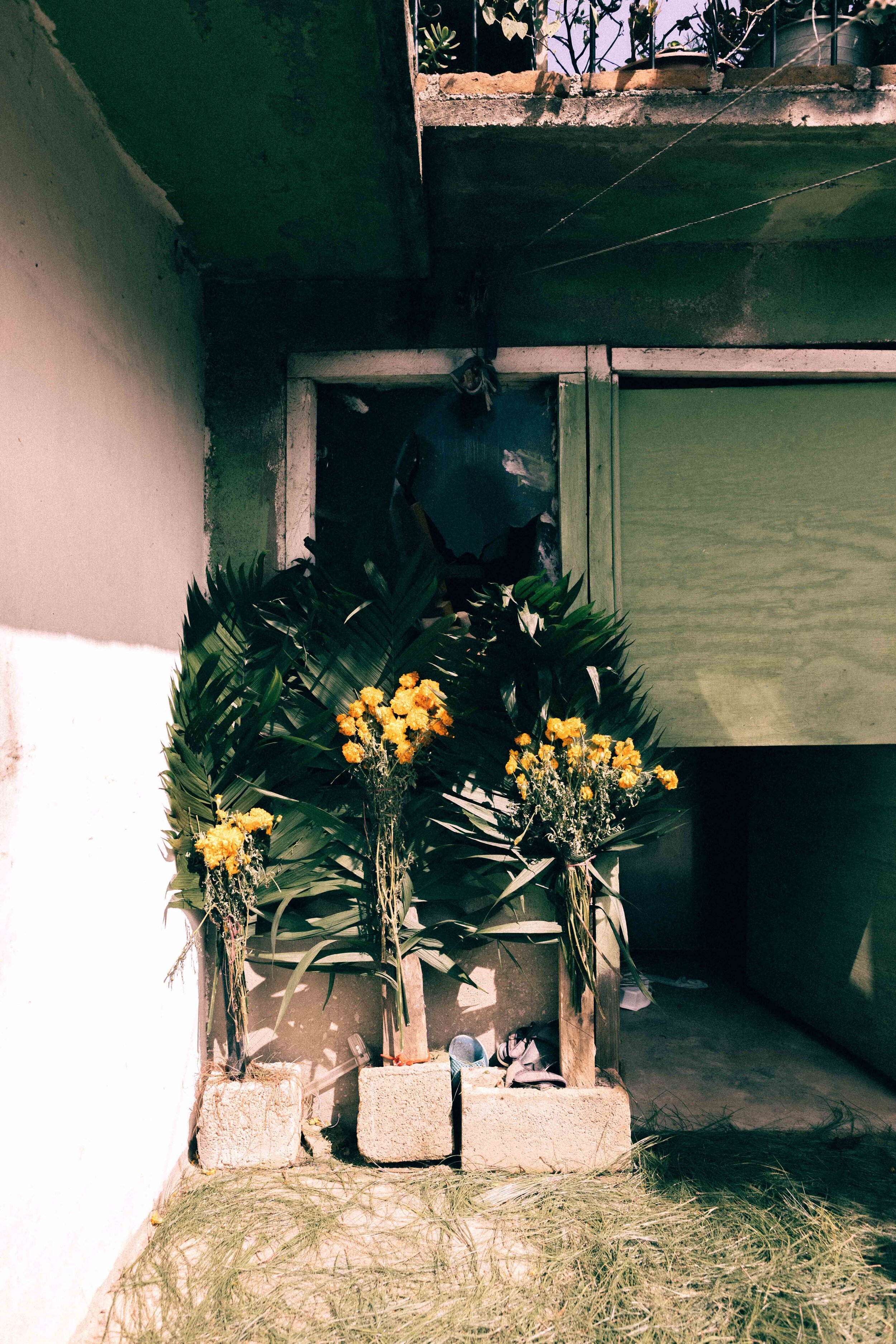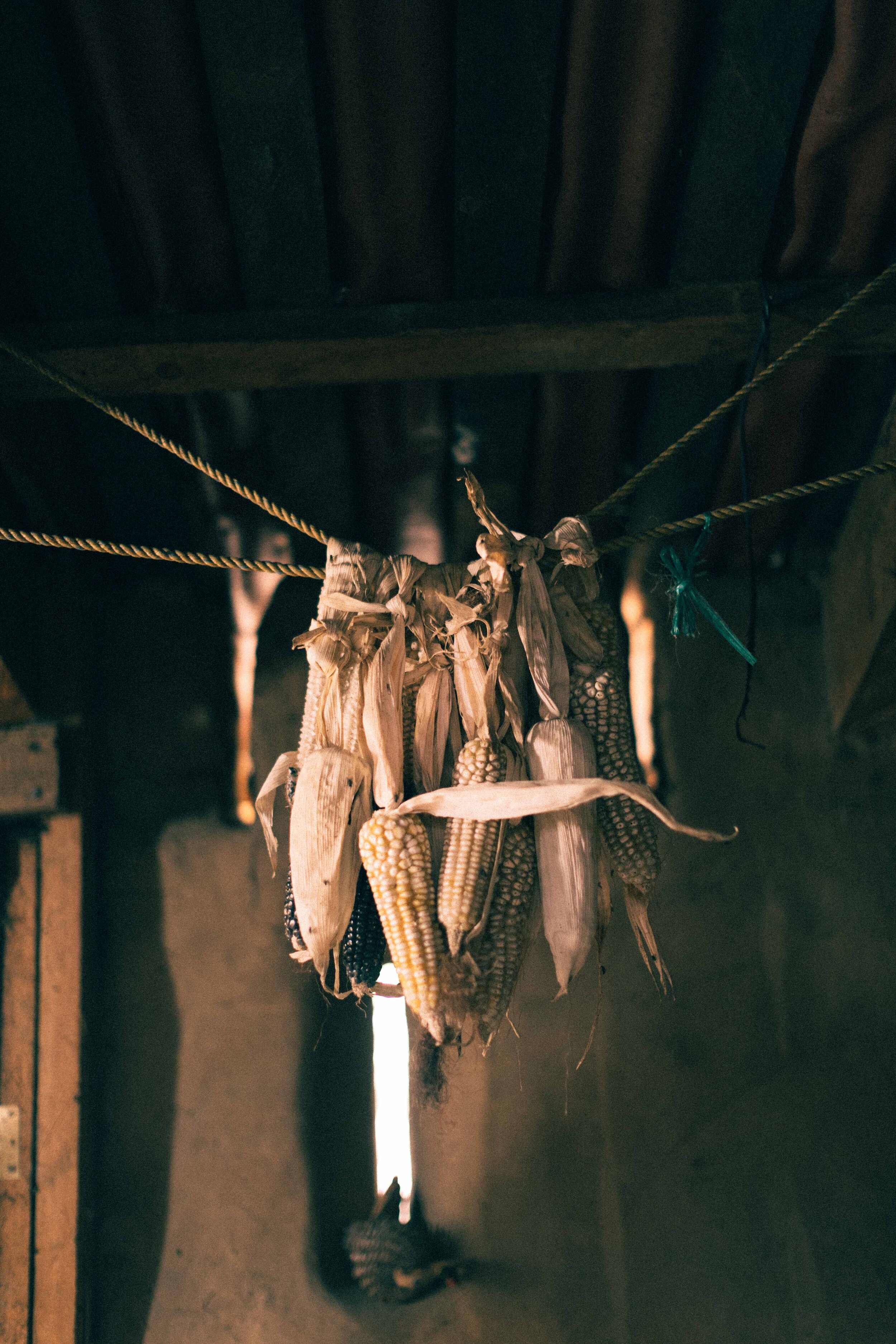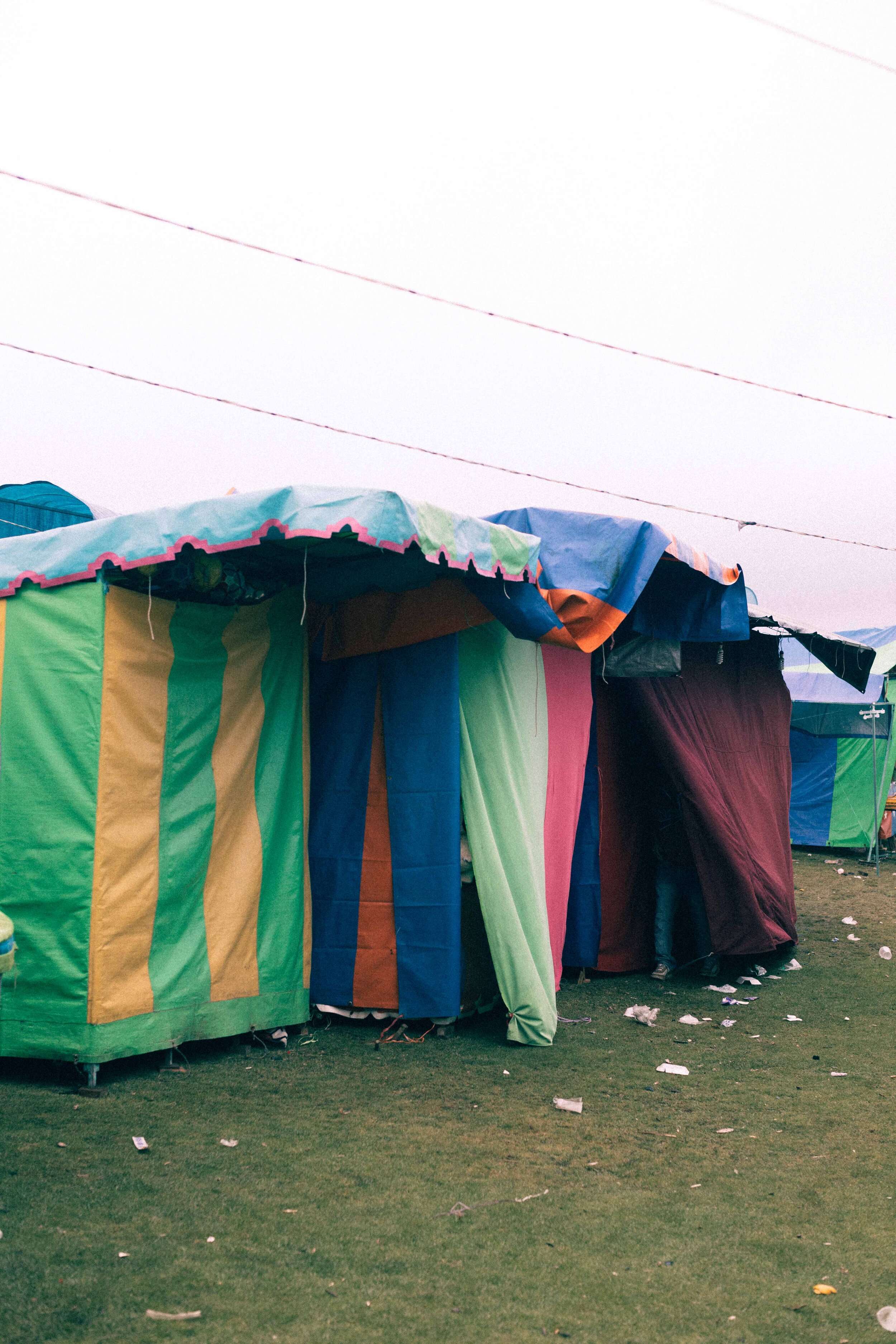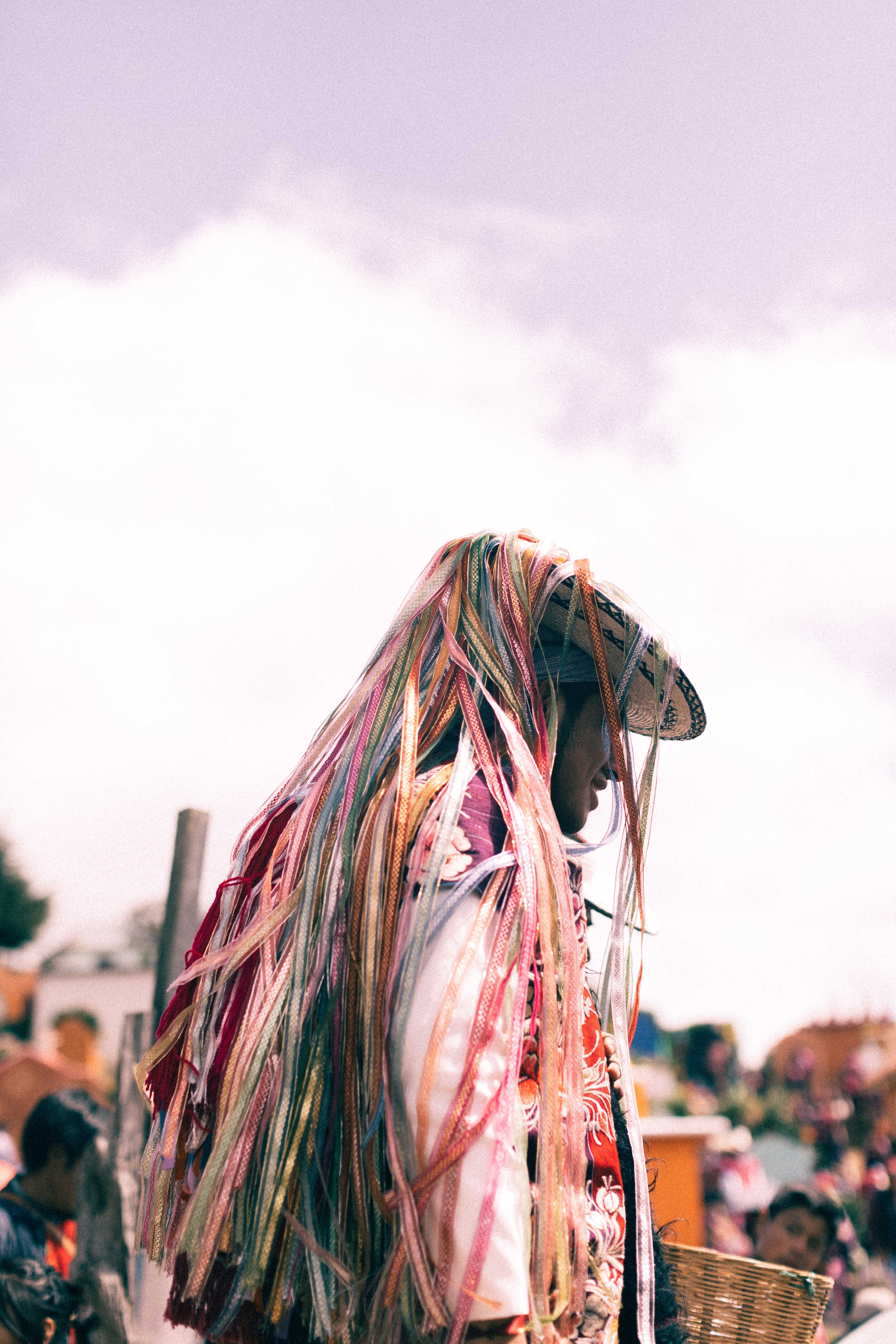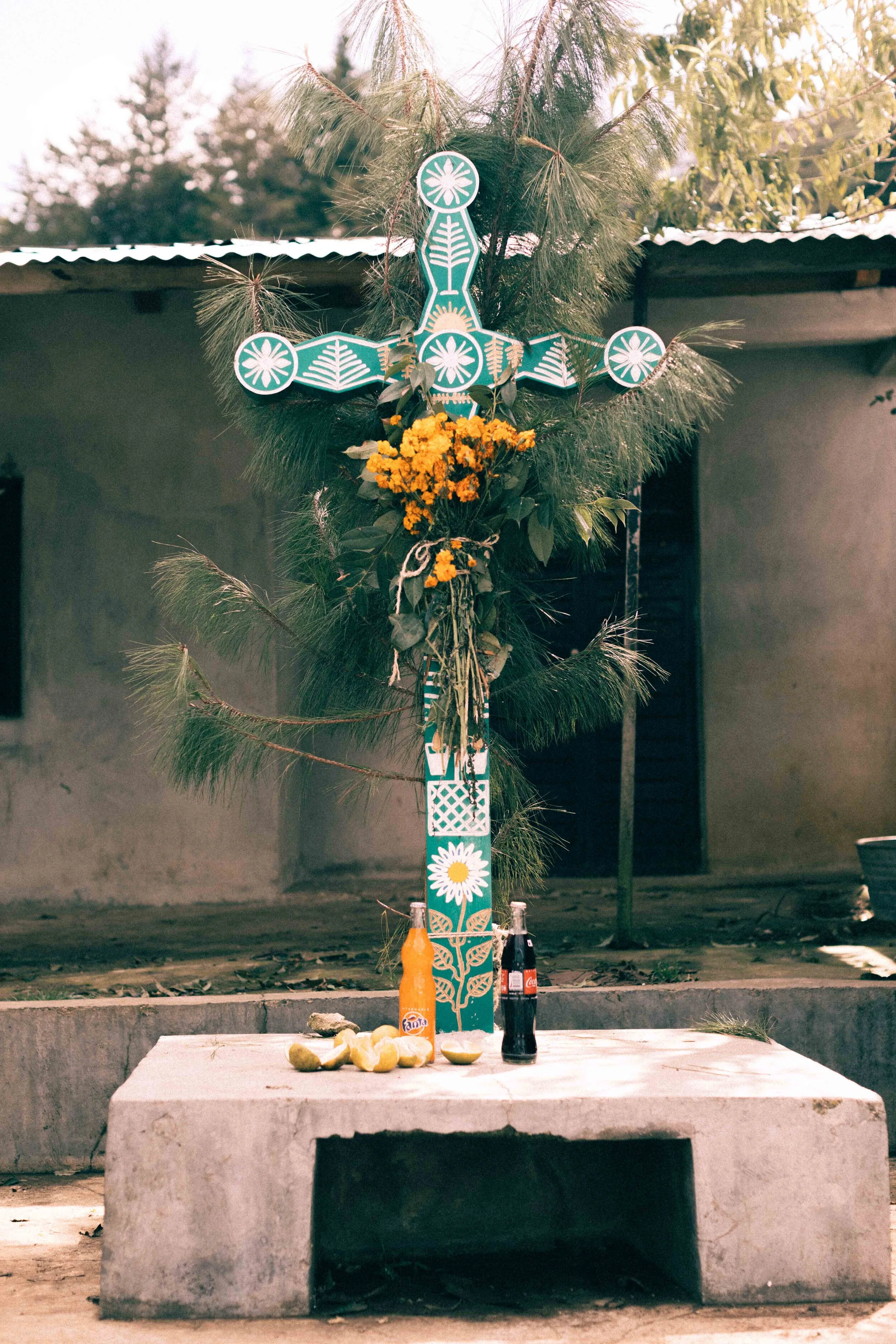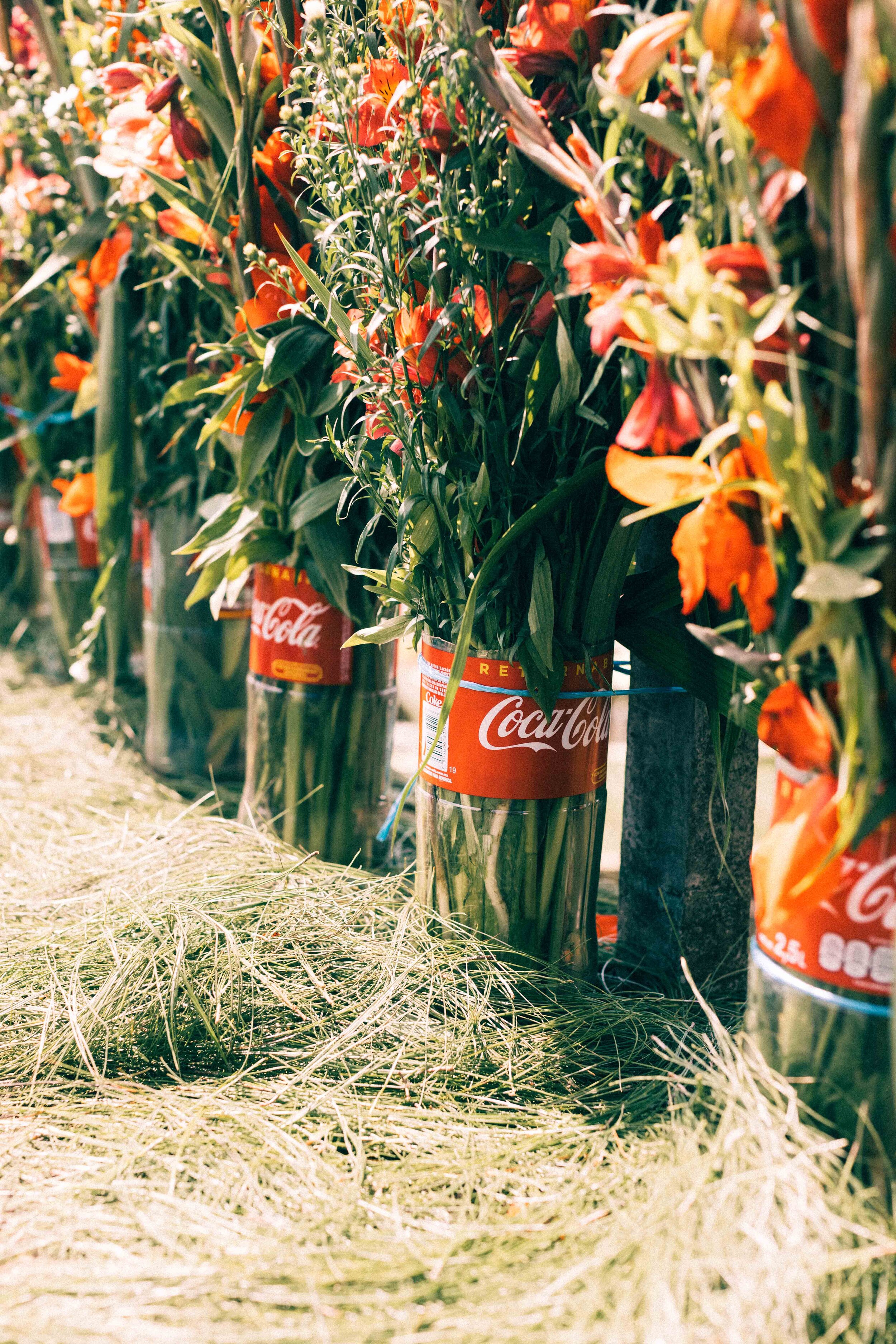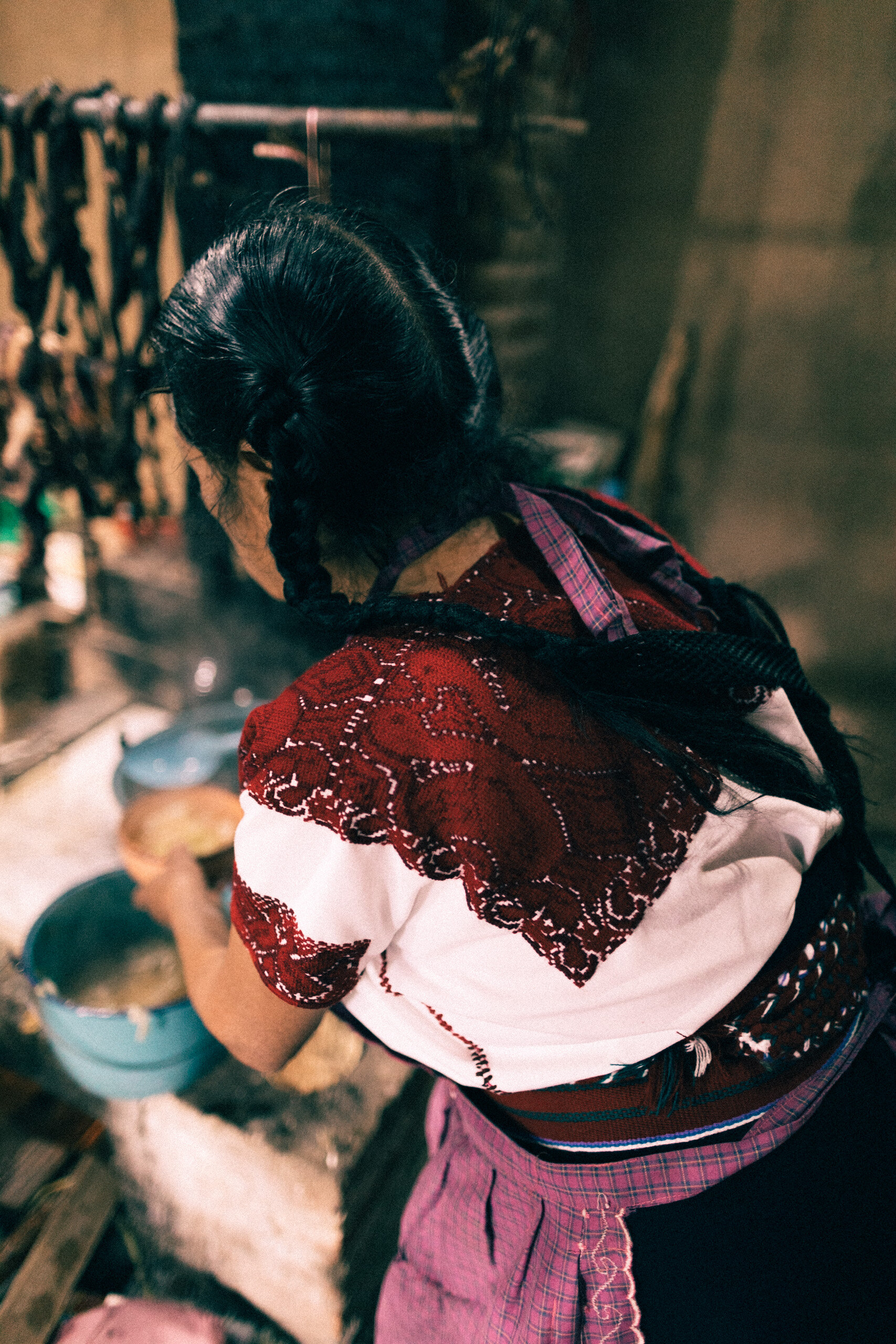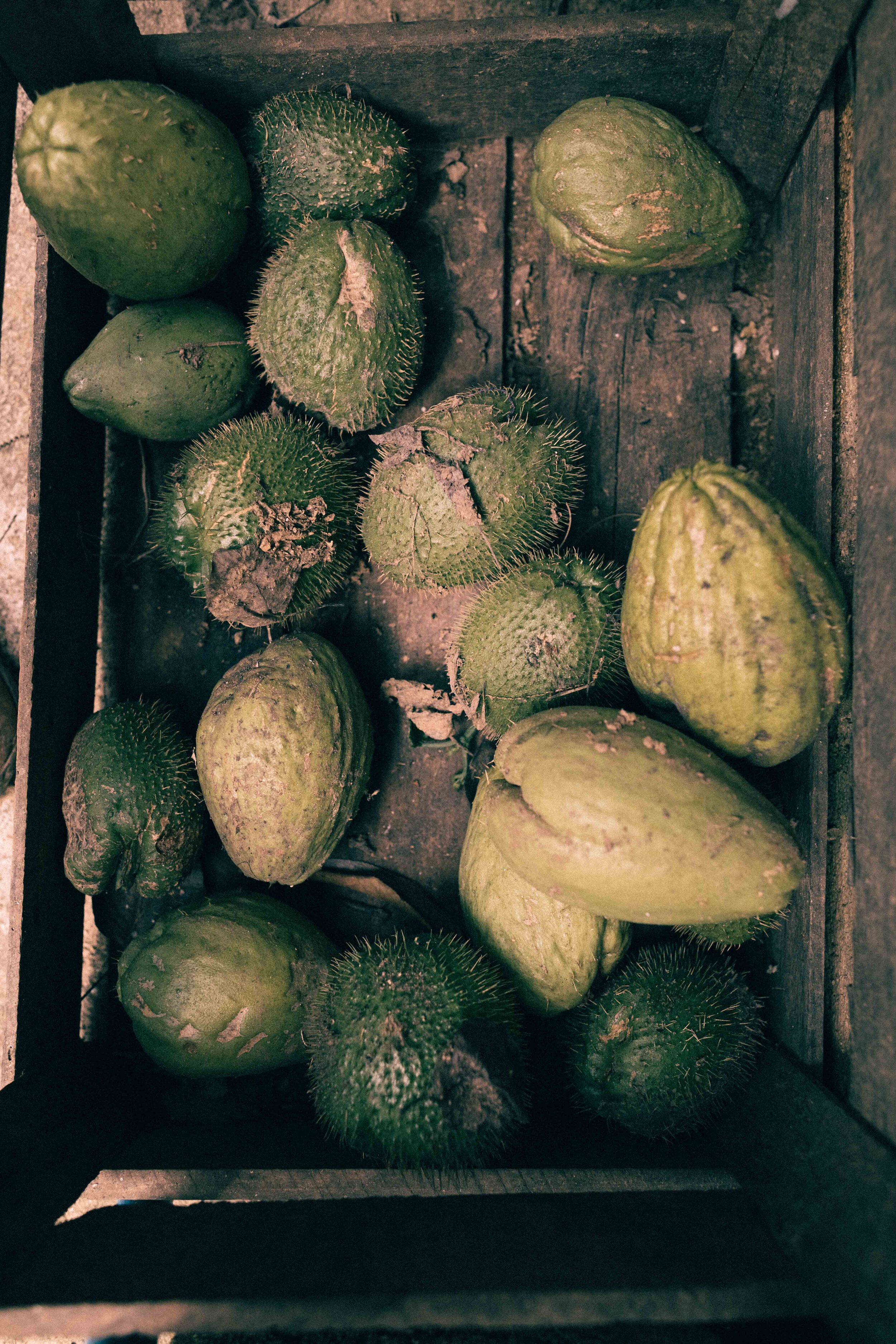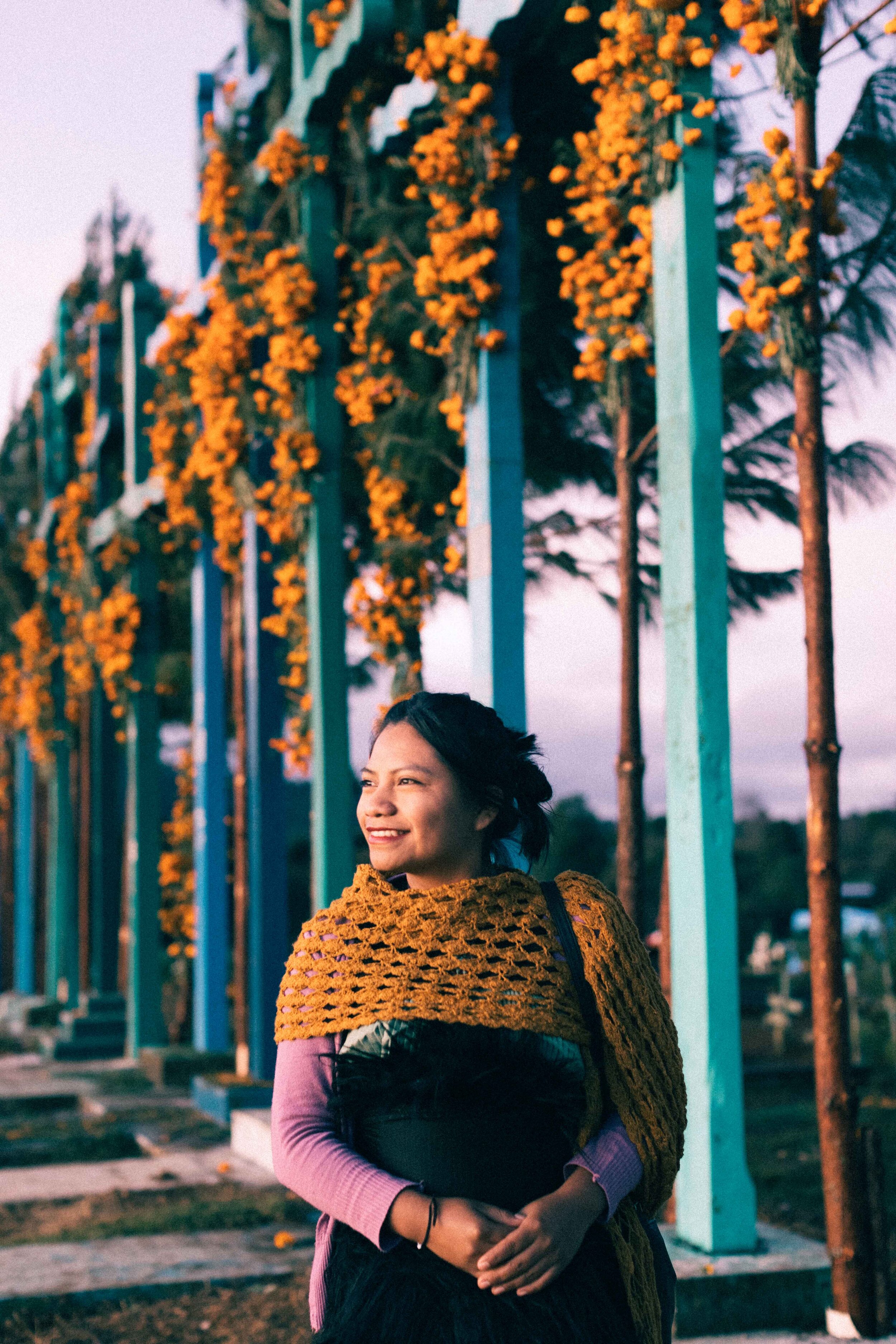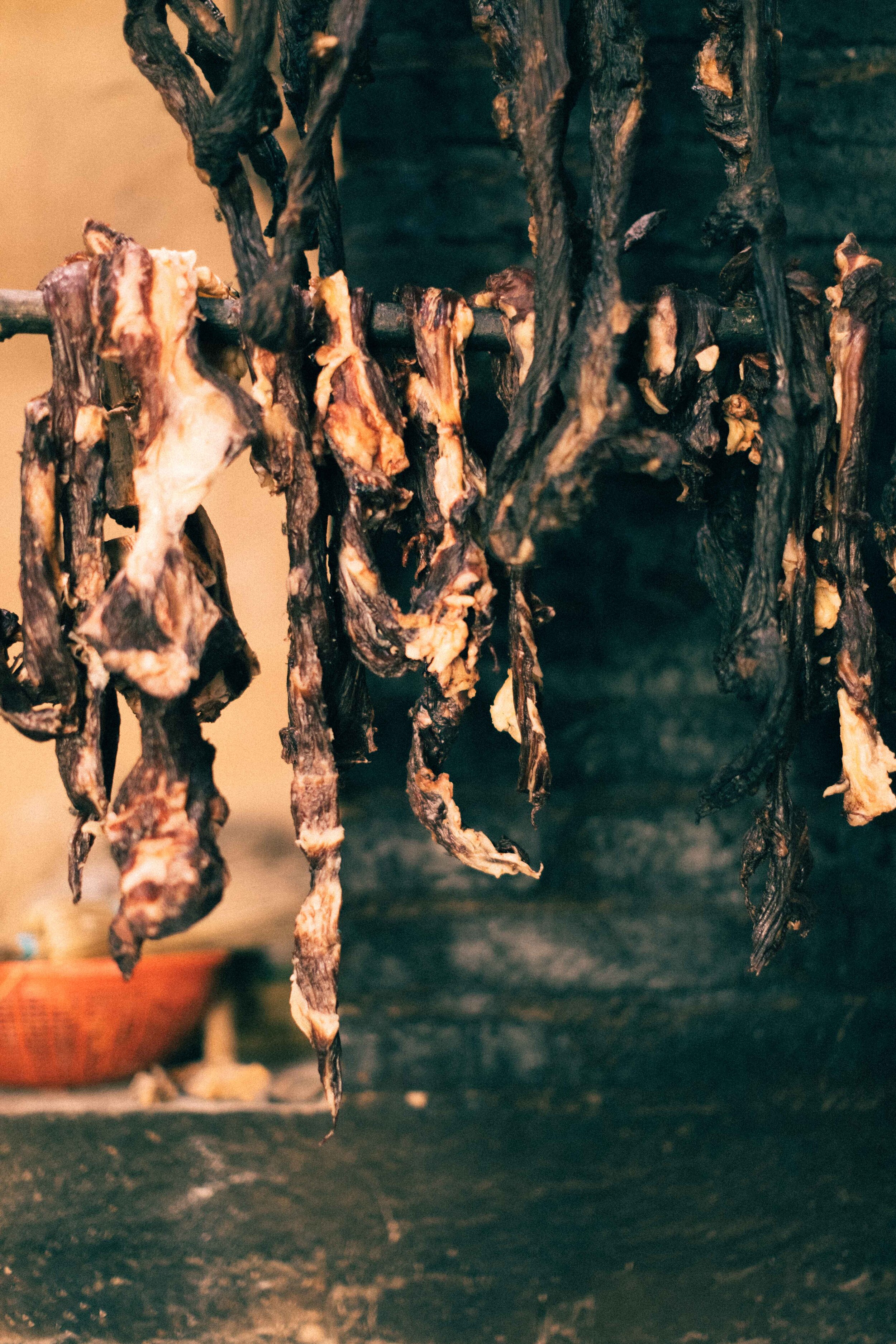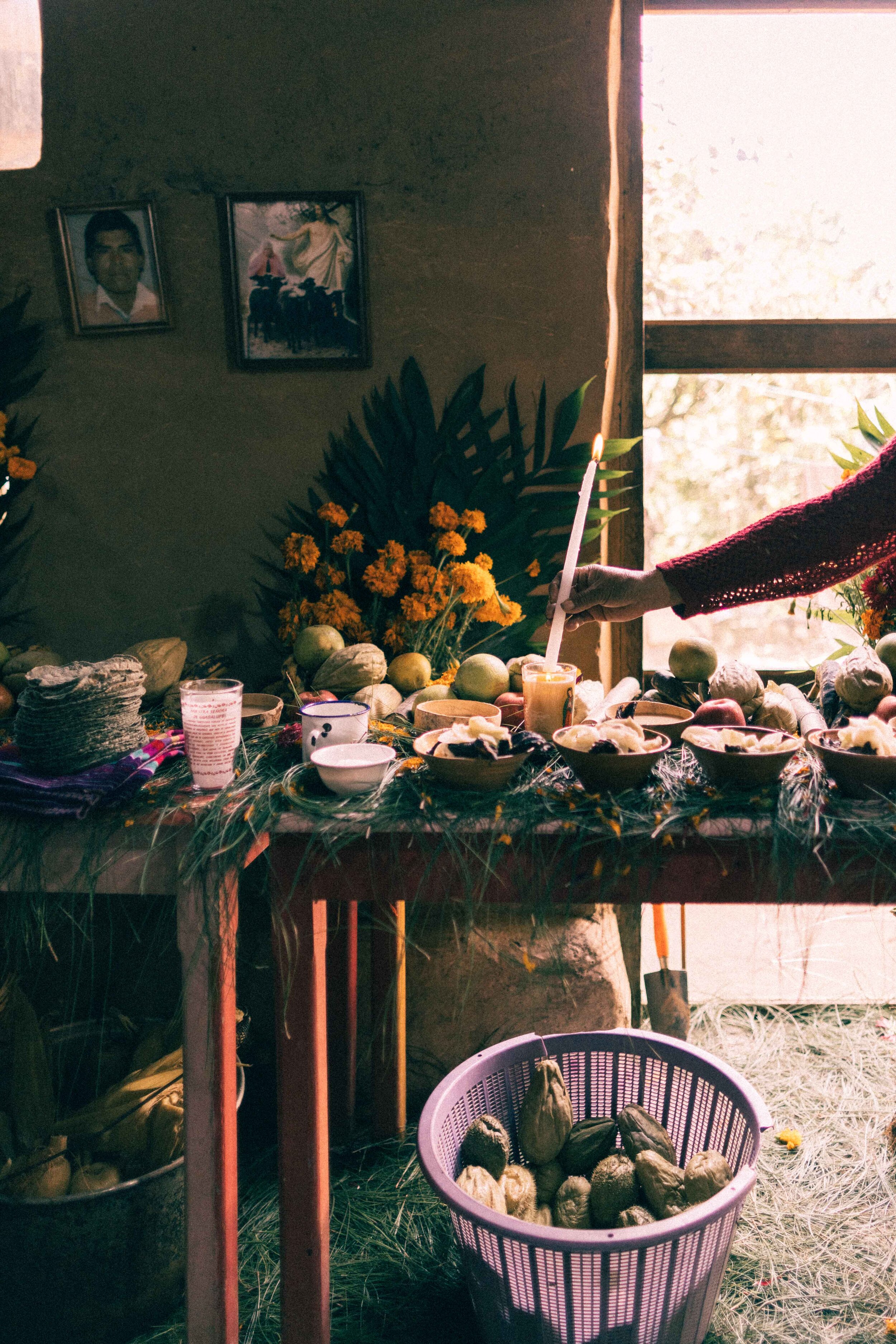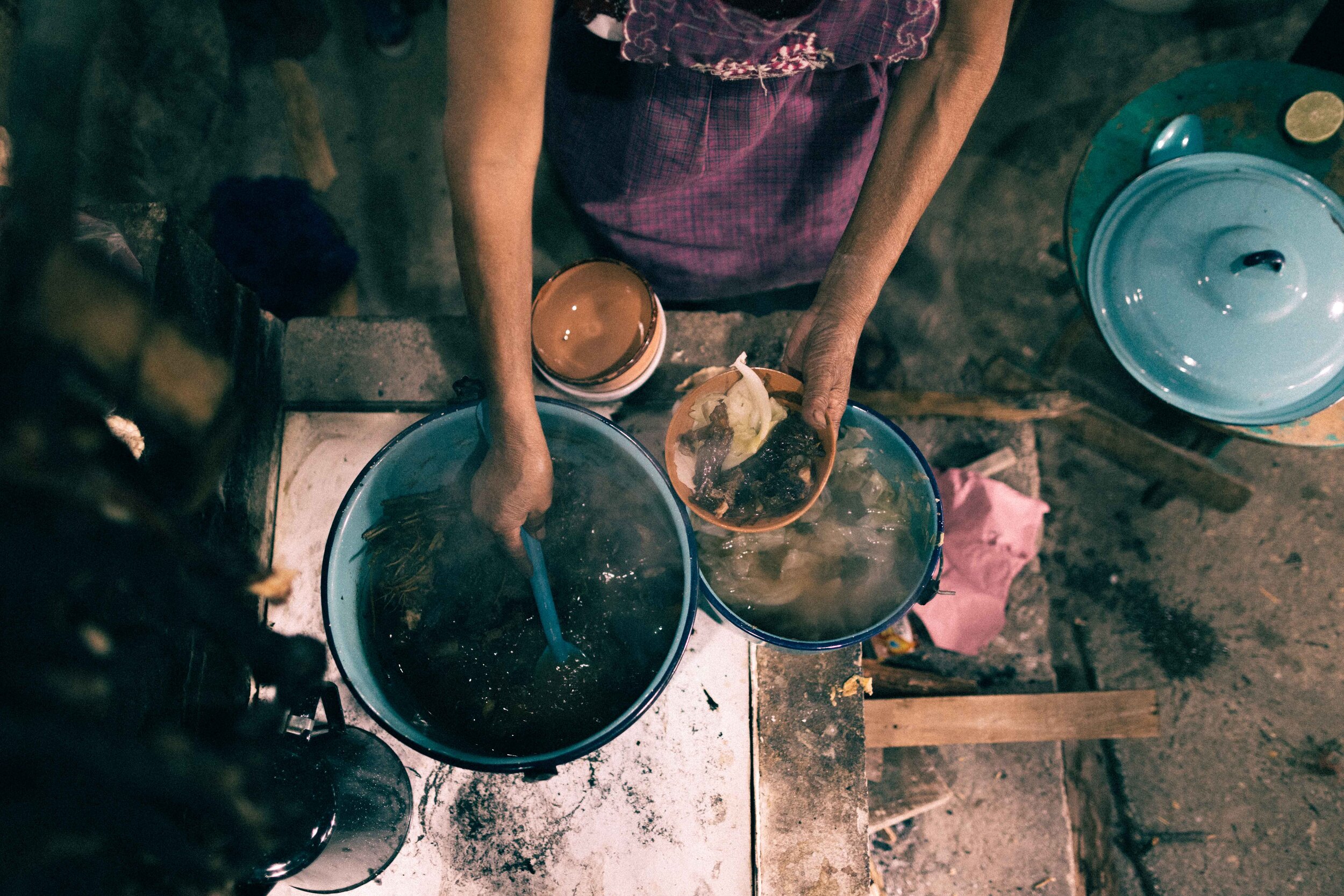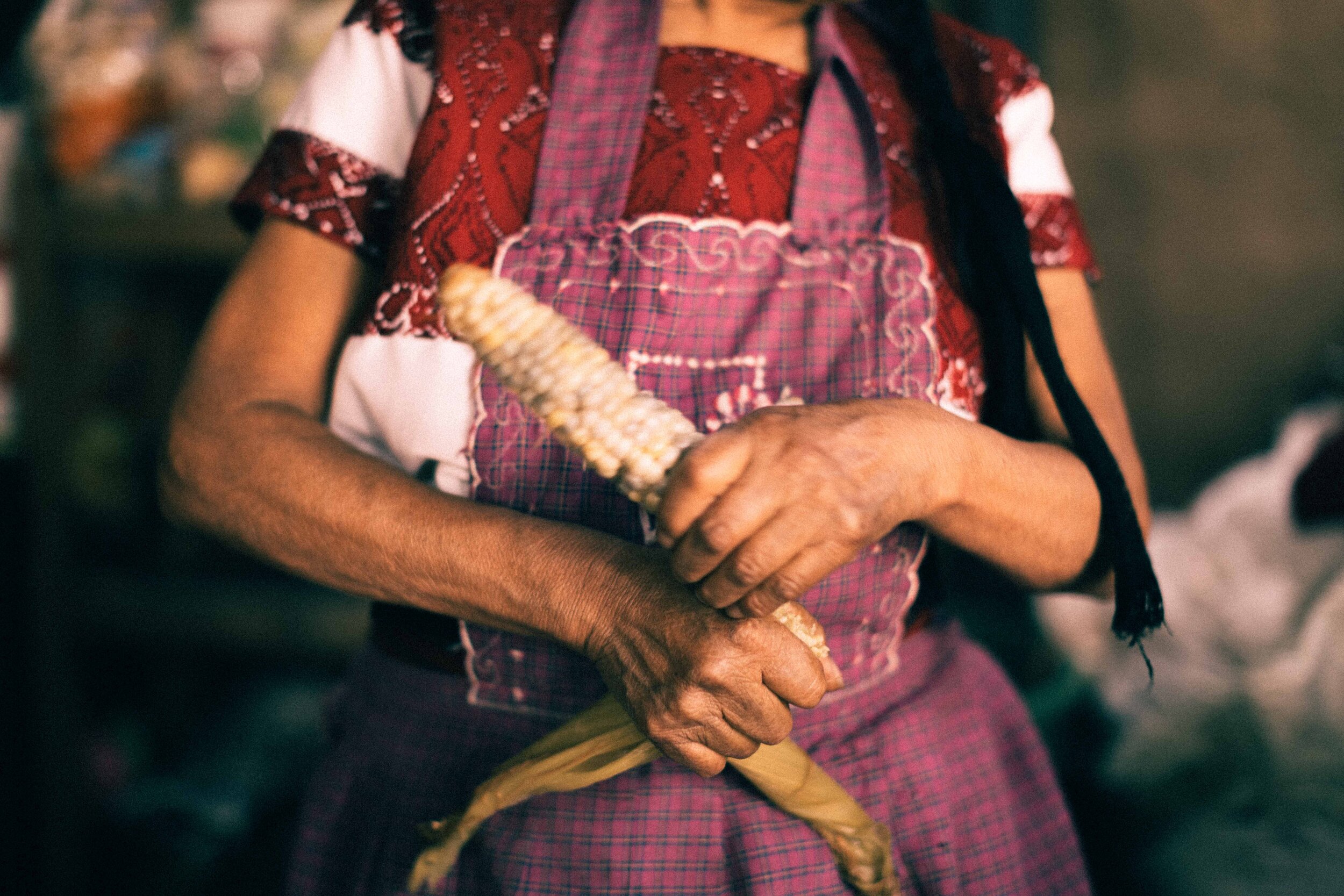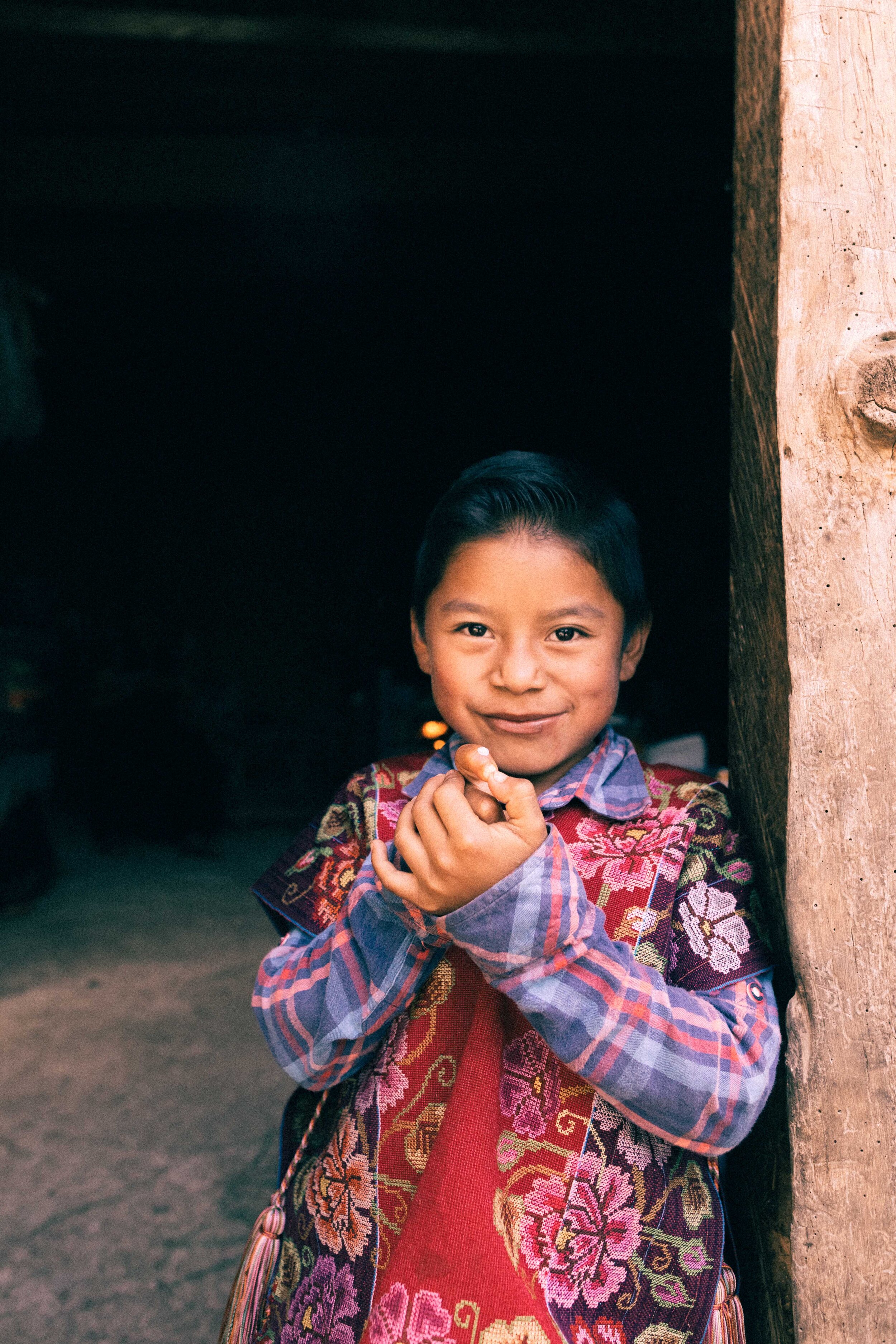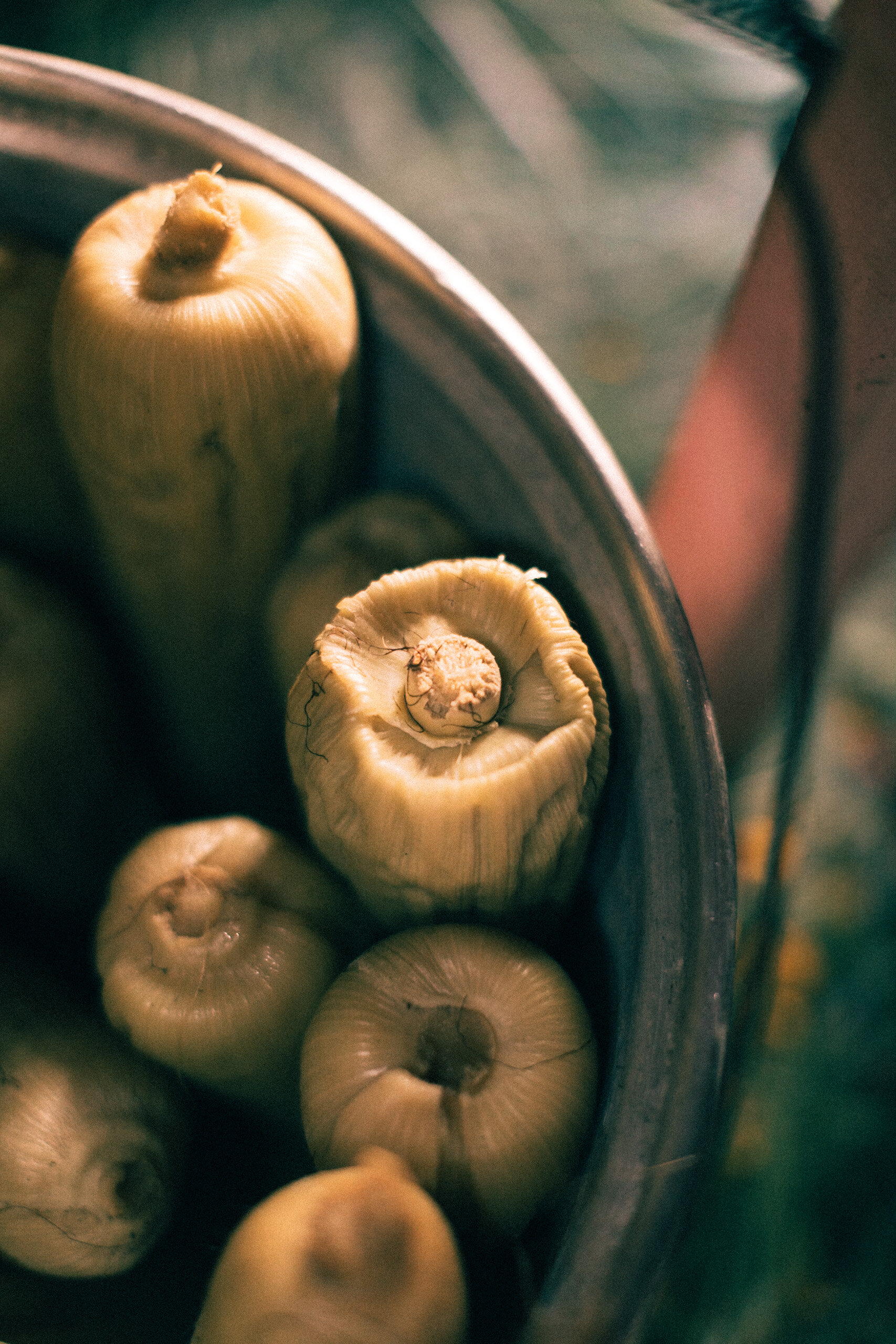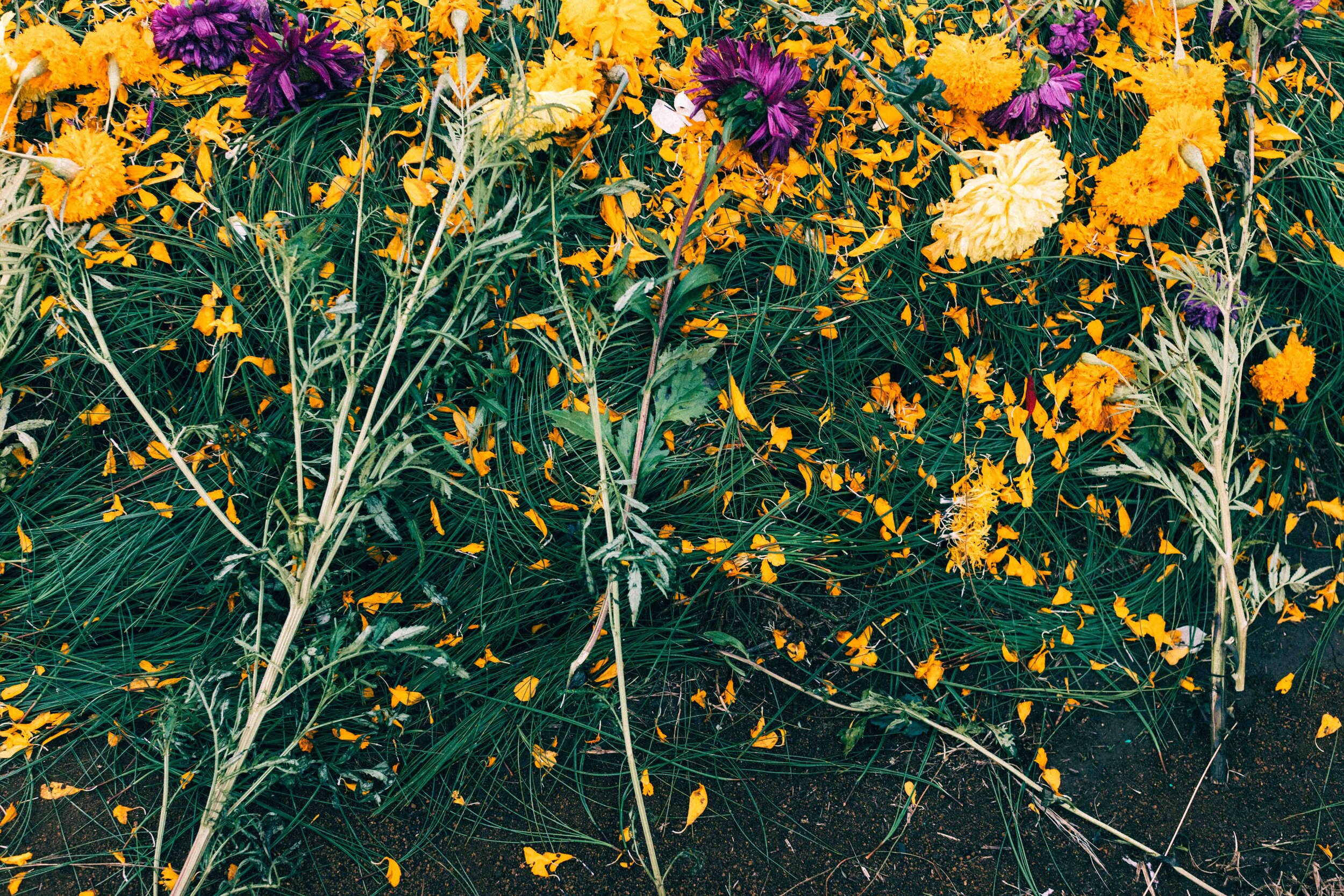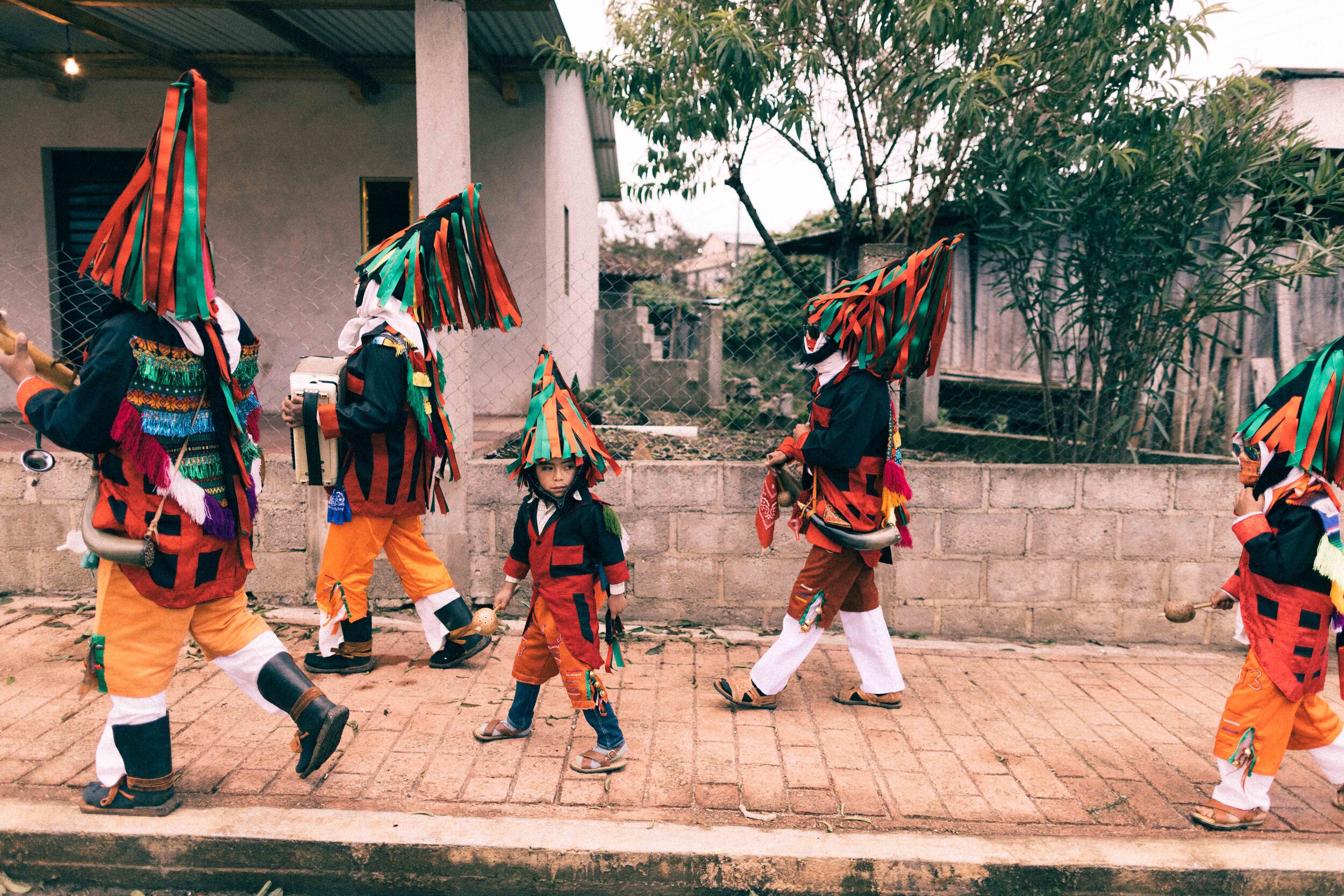High on a hill overlooking the small town of Romerillo Chamula in the Los Altos region of Chiapas, Mexico stand twenty-two nine-meter, blue and green crosses demarking the pantheon, the ceremonial burial place for the municipality's dead. Originally constructed by the ancestors of the Tzotzil, the indegenous people who inhabit the remote villages of these highlands near the Guatemalan border, the crosses significantly pre-date the arrival of Christianity to the region. Legend has it that the ancient cross-builders quickly ran into trouble with the local spider monkey population. Bands of monkeys would steal through the cemetery at night, knocking down the crosses and ruining the pantheon. The villagers, having resurrected the crosses, donned conical hats with large streamers and brightly colored suits. They gathered in the pantheon to dance and sing in honor of the gods of heaven and earth, thus protecting the markers of the souls of their beloveds. The plan succeeded, and the ceremony was repeated the next August and the next and the next. Today, the crosses remain, standing amidst a grove of tall pines. The Spanish attempted to suppress these traditions as Catholicism spread across the region in the sixteenth century, but instead the Chamulas, as the Tzozil people in this region are called, merged their pantheistic traditions of dance and music and food with the Day of the Dead and All Souls Day, the Catholic holidays that span the 1st and 2nd of November, when the veil between worlds thins and the dead return to visit.
Because of this highland-region’s geographic isolation, the Days of the Dead, or the Sk´Ak´Alil Anima´Etik, traditions have remained largely unadulterated by the mainstream celebrations of central Mexico. No skull-painted faces. No parades. The ancient traditions remain much entact. When photographer Jimena Peck arrived in Los Altos Chiapas to photograph the crafts of the region’s renowned weavers, she quickly discovered that few locals spoke Spanish. The majority of people speak only indegidious languages, mostly Tzotzil, a Mayan derivative. In the middle of October, weaving came to a halt as people began to prepare for the holiday.They cleaned roads and swept the cemeteries, so the dead would not trip or lose their way, and began smoking/drying meat. This jerky is an offering: light and compact, therefore an easy food for the dead to travel with. Families decorated the cemeteries with colorful flowers and left trails of marigolds--whose scent and bright color are meant to guide ancestors back to their families. Here, the dead visit living relatives to strengthen the bonds of the community across the barrier between life-and-death, while the living honor their ancestors, to prevent them from becoming lonely, evil spirits.
As Jimena followed the celebrations in the Romerillo pantheon and the villages of Romerillo-Chamula and Zinacantan, she noted that the celebrations for the holiday fell into two distinct realms: public and private. Within each family, women and girls prepared a holiday meal of chicken broth and cabbage, handmade tortillas, coffee, sour atole (a hot, corn-meal beverage) and smoked beef--all served in clay dishes and jugs. The families placed chayotes (squash), corn cobs, reeds, oranges, bouquets of marigolds, dahlias and geraniums on the family’s table and before the ancestral altar, and spread pine boughs (a symbol of life) over the altar and floor. Small chairs were arranged in front of the altar so that the visiting souls of their ancestors could sit, rest, and eat.
No one slept on the eve of the holiday--they stayed awake, making offerings. On the morning of November 1, families arrived at the cemeteries with more food and offerings. They placed the edibles, liquor, Coca-cola, candles--even packs of cigarettes-- before openings constructed aside their relatives’ headstones (representing portals to the underworld), and they sat down next to the plots, made to look freshly dug and then covered with pine boughs, flowers, and boards that symbolize doors.
In the Romerillo pantheon and the cemetery in Zinacantan, people drank posh or pox, a corn liquor much like moonshine, and poured shots over the graves and tombs. Musicians played, church stewards accompanied sacristans-- wearing black wool jorongos (panchos) and a type of Mayan heeled-shoe that pre-dates the arrival of the Spanish--as they moved from grave to grave, praying with families in Latin upon request. Most families stayed all day.
In the afternoon of November 2, the dead retreat. Back home, the living dismantled the tables of offerings, lest any lonely, evil spirits try to enjoy them, too.
